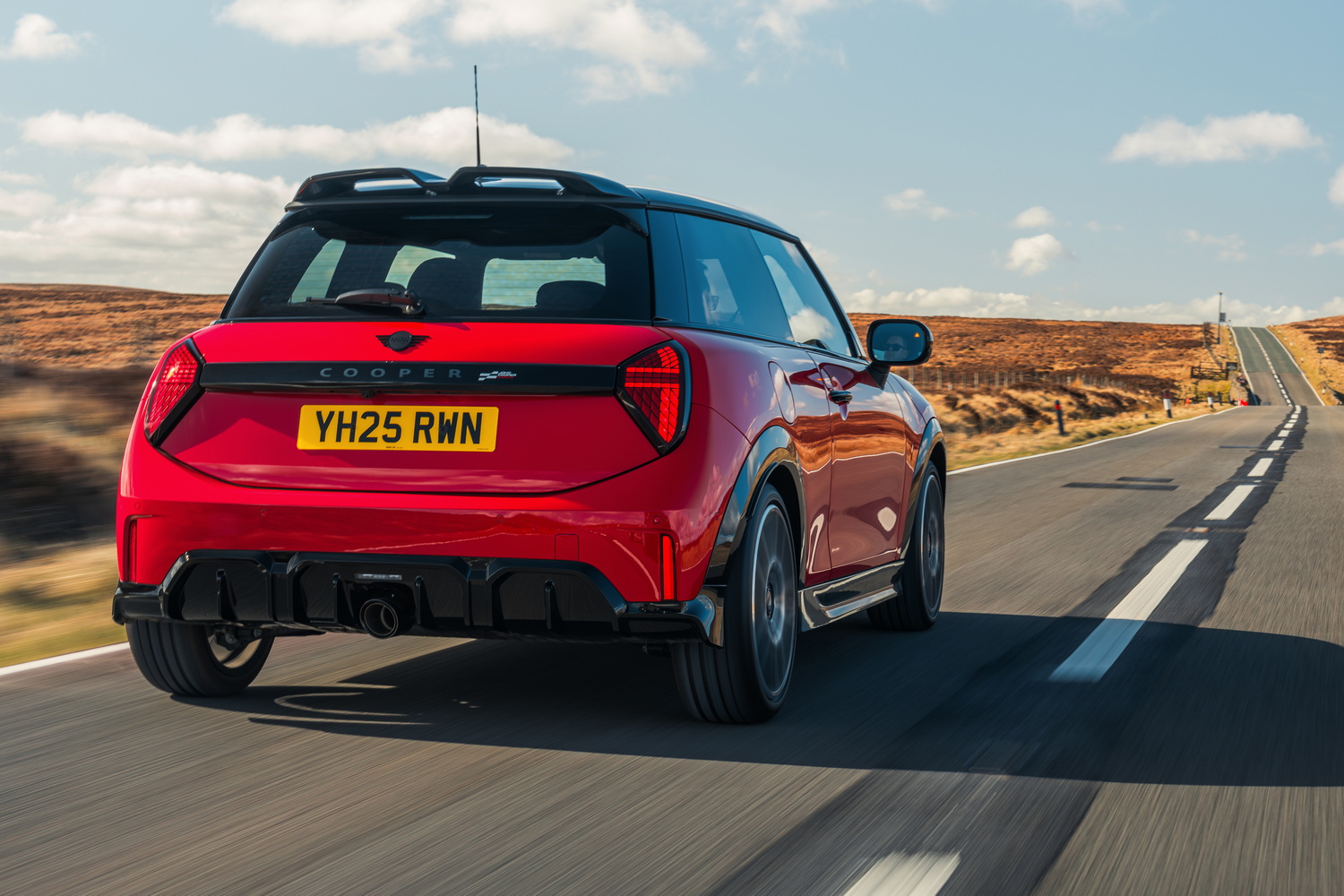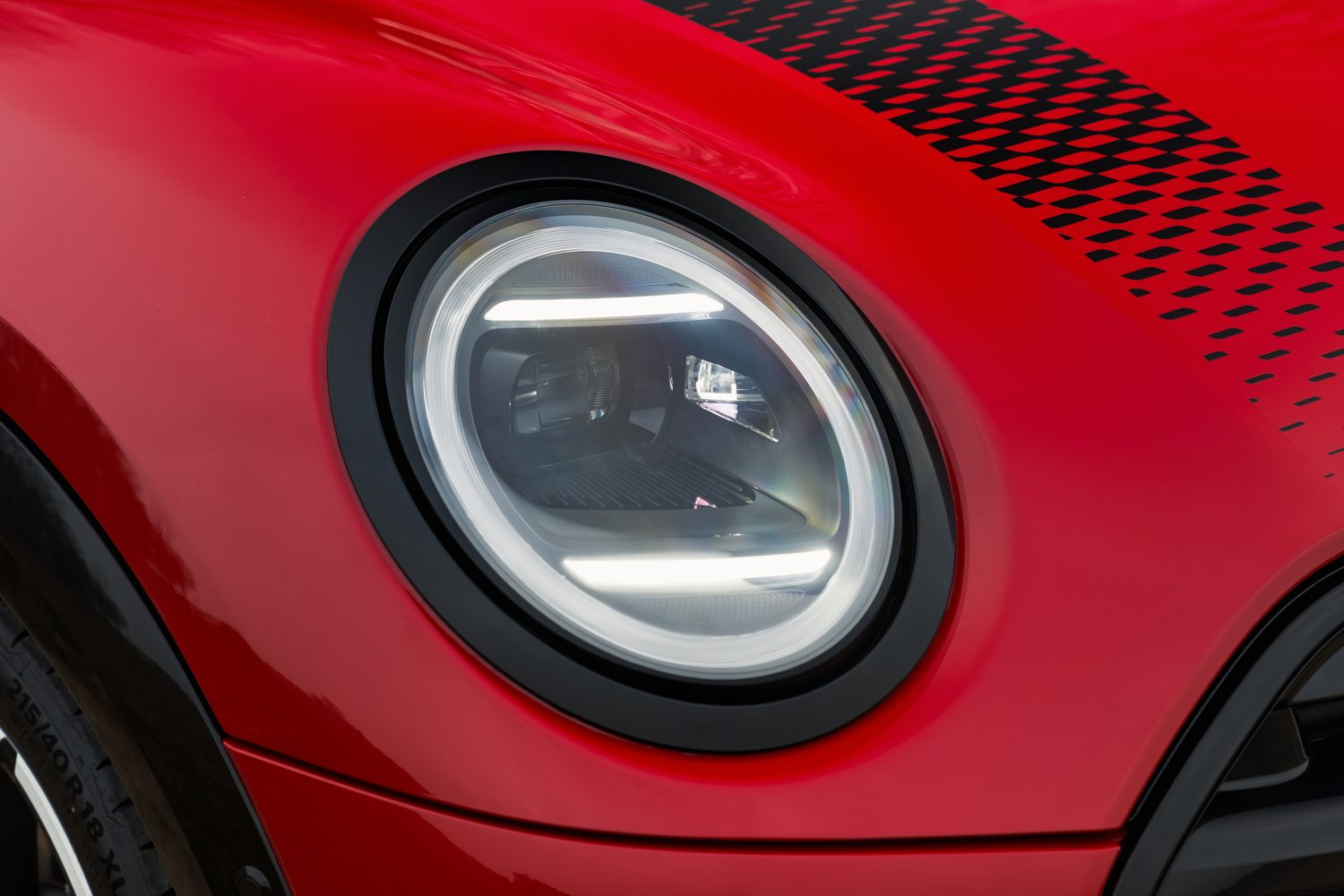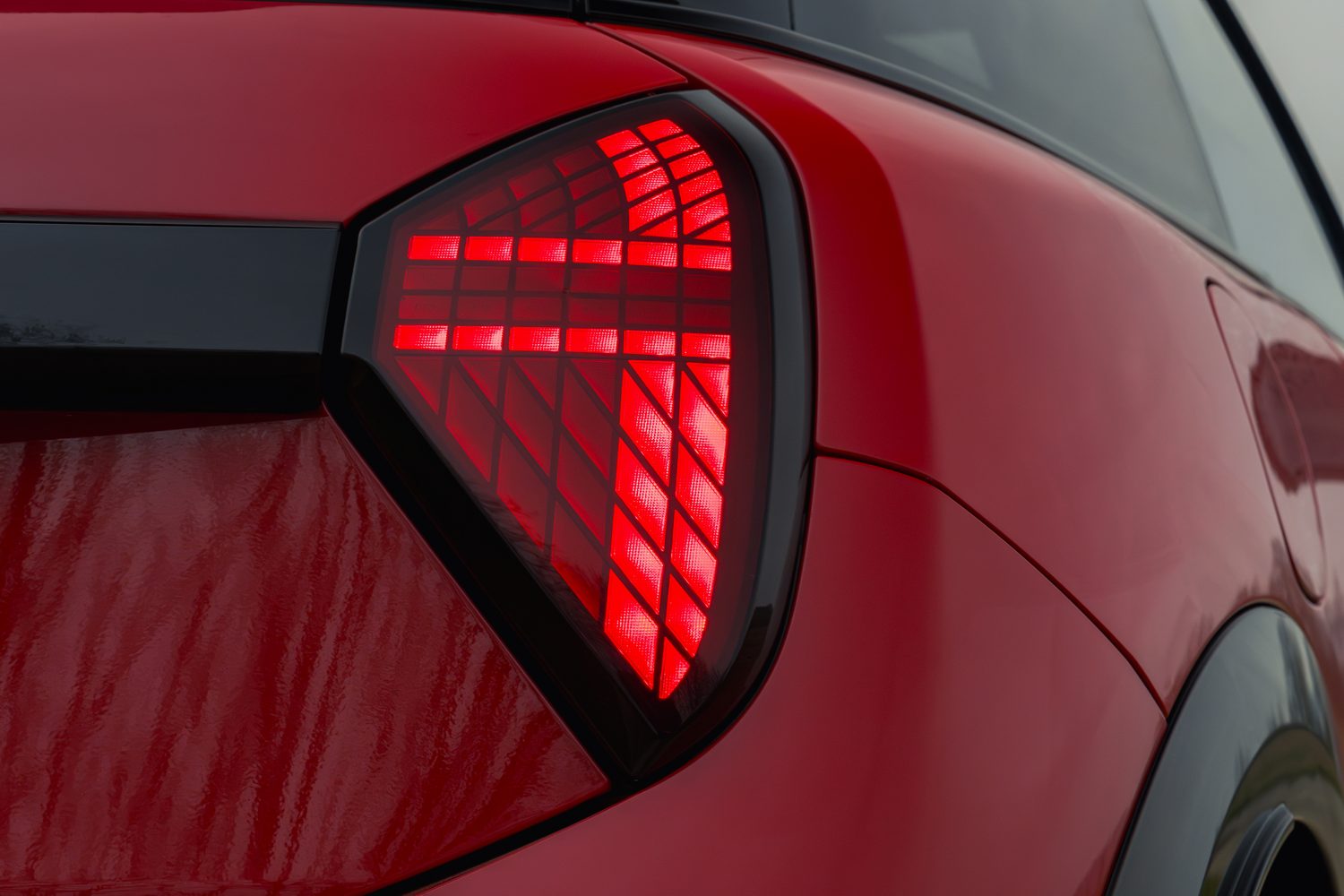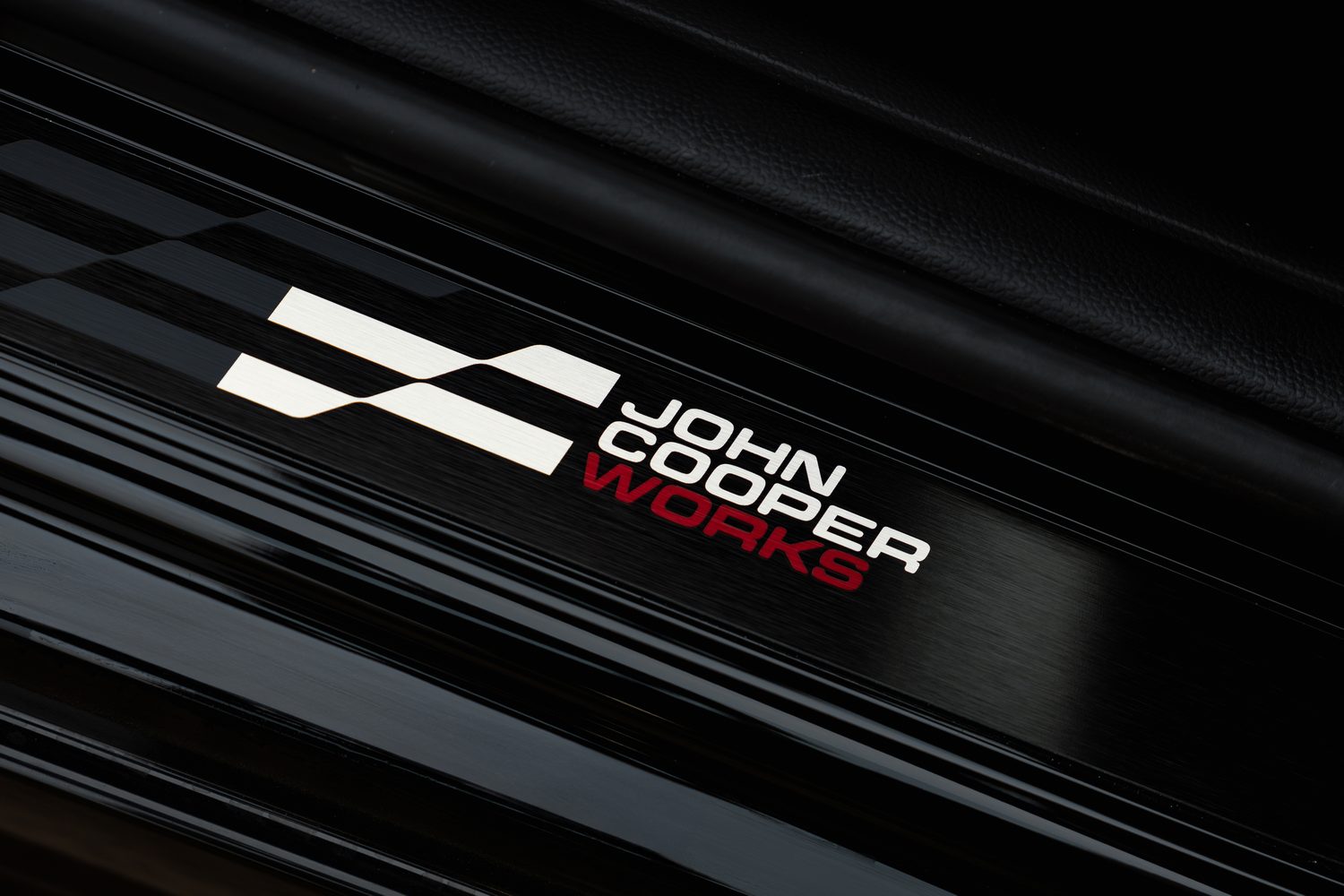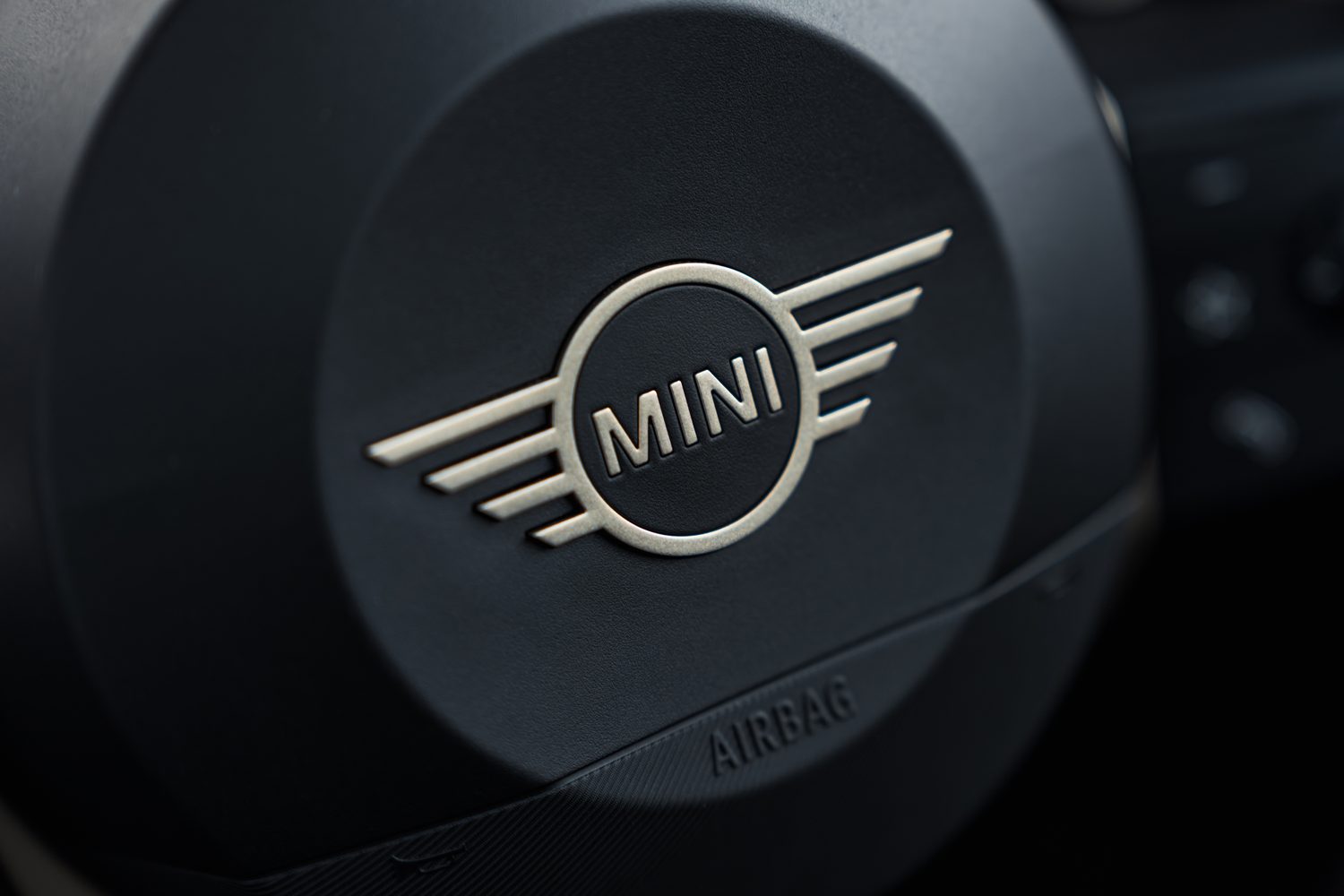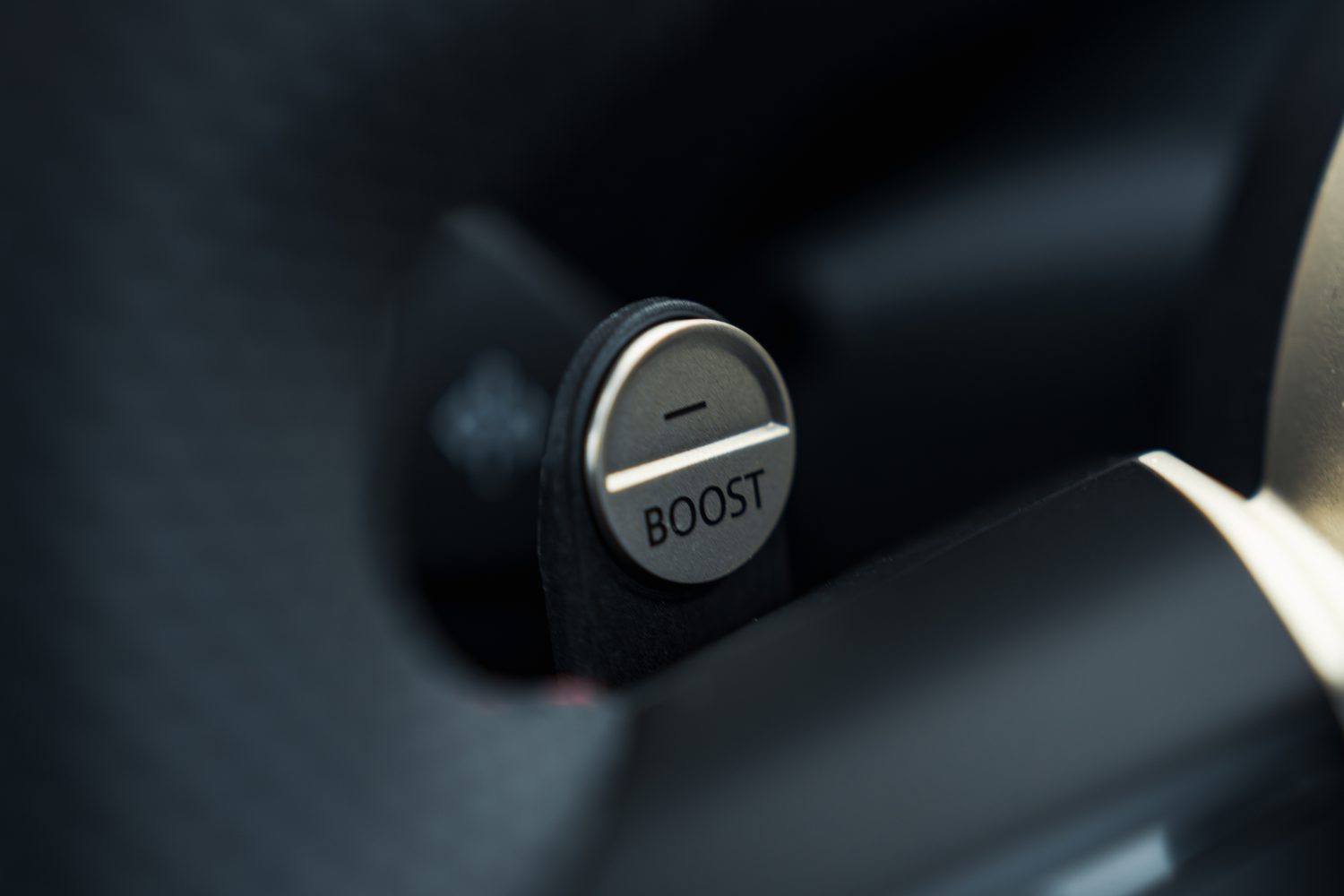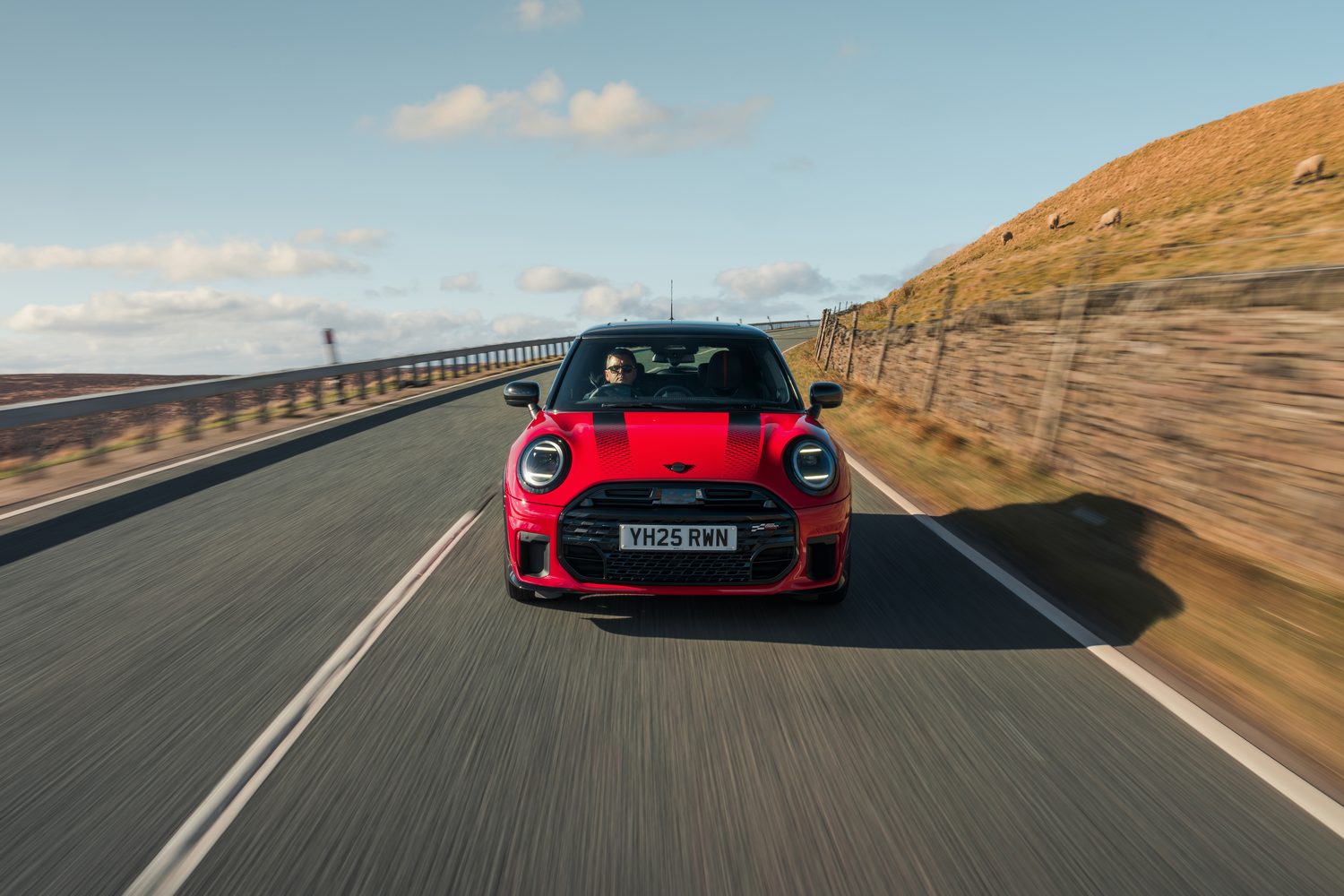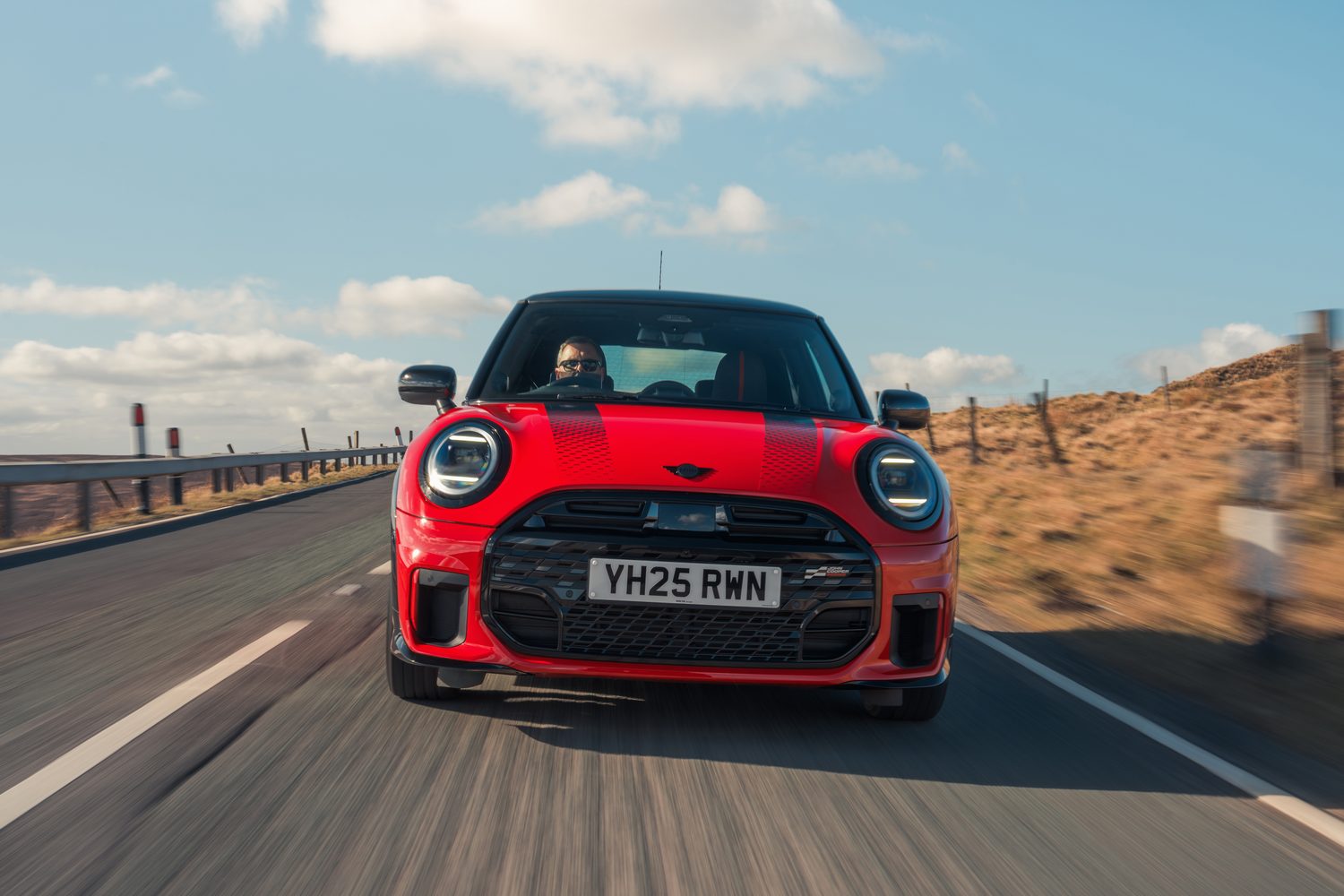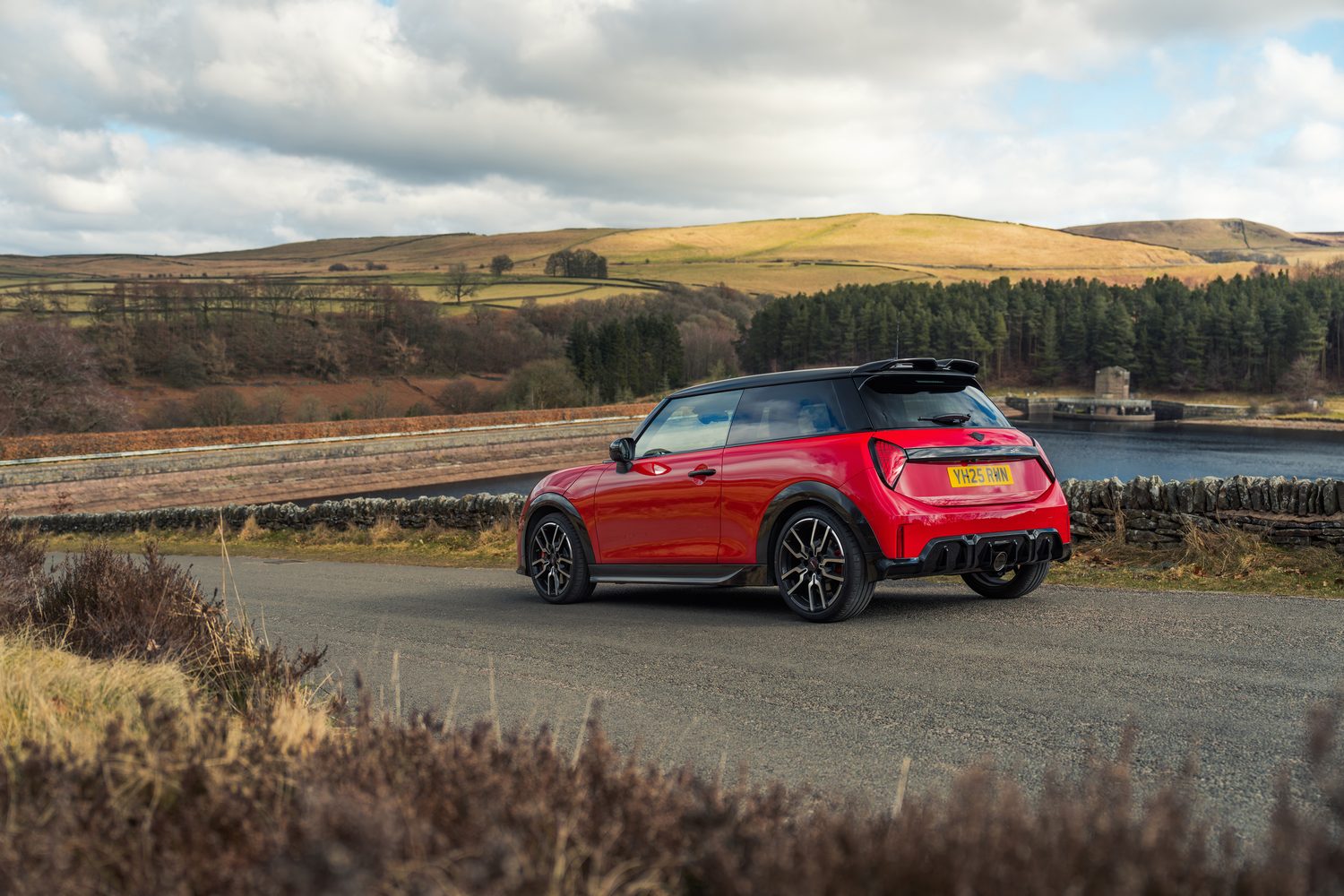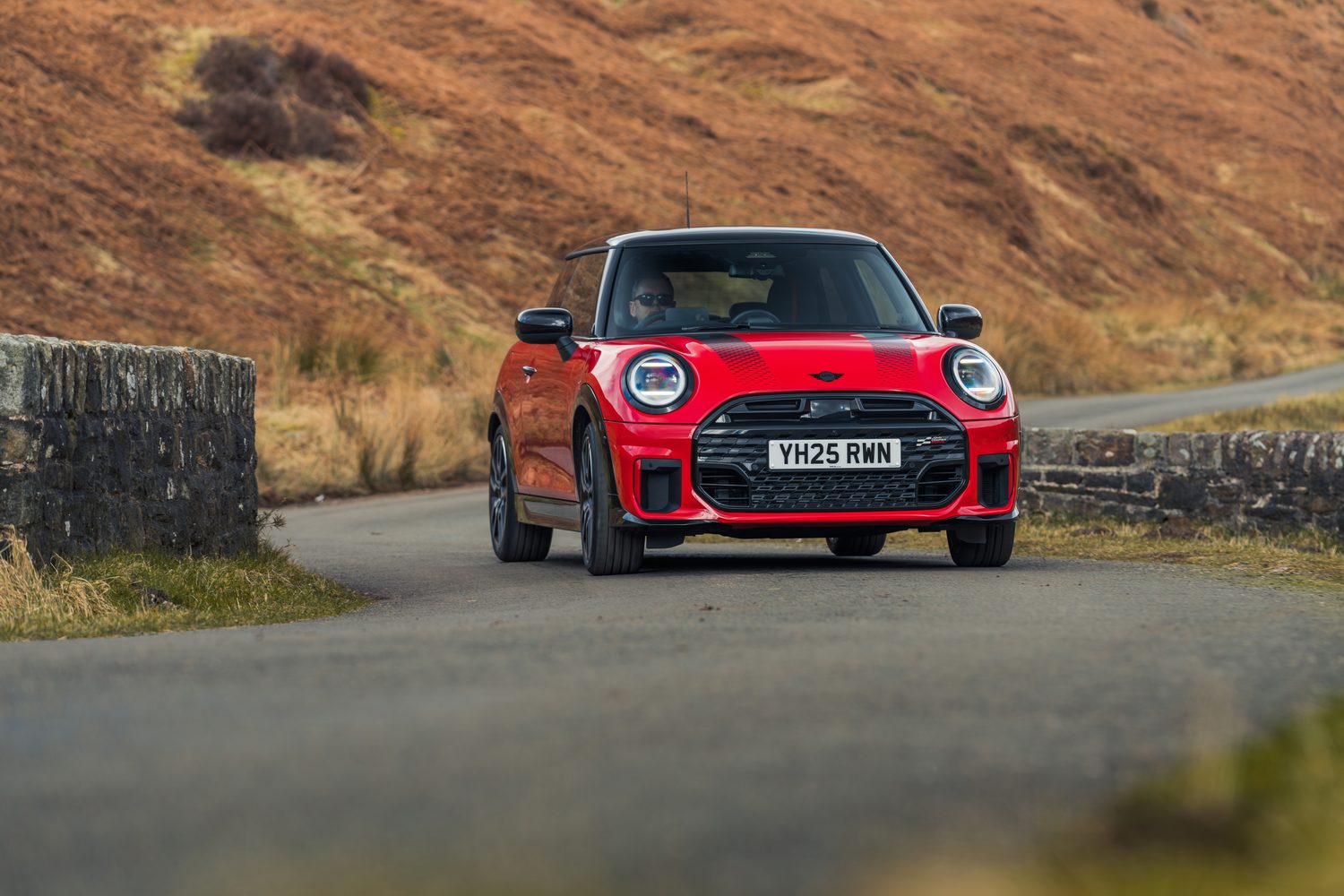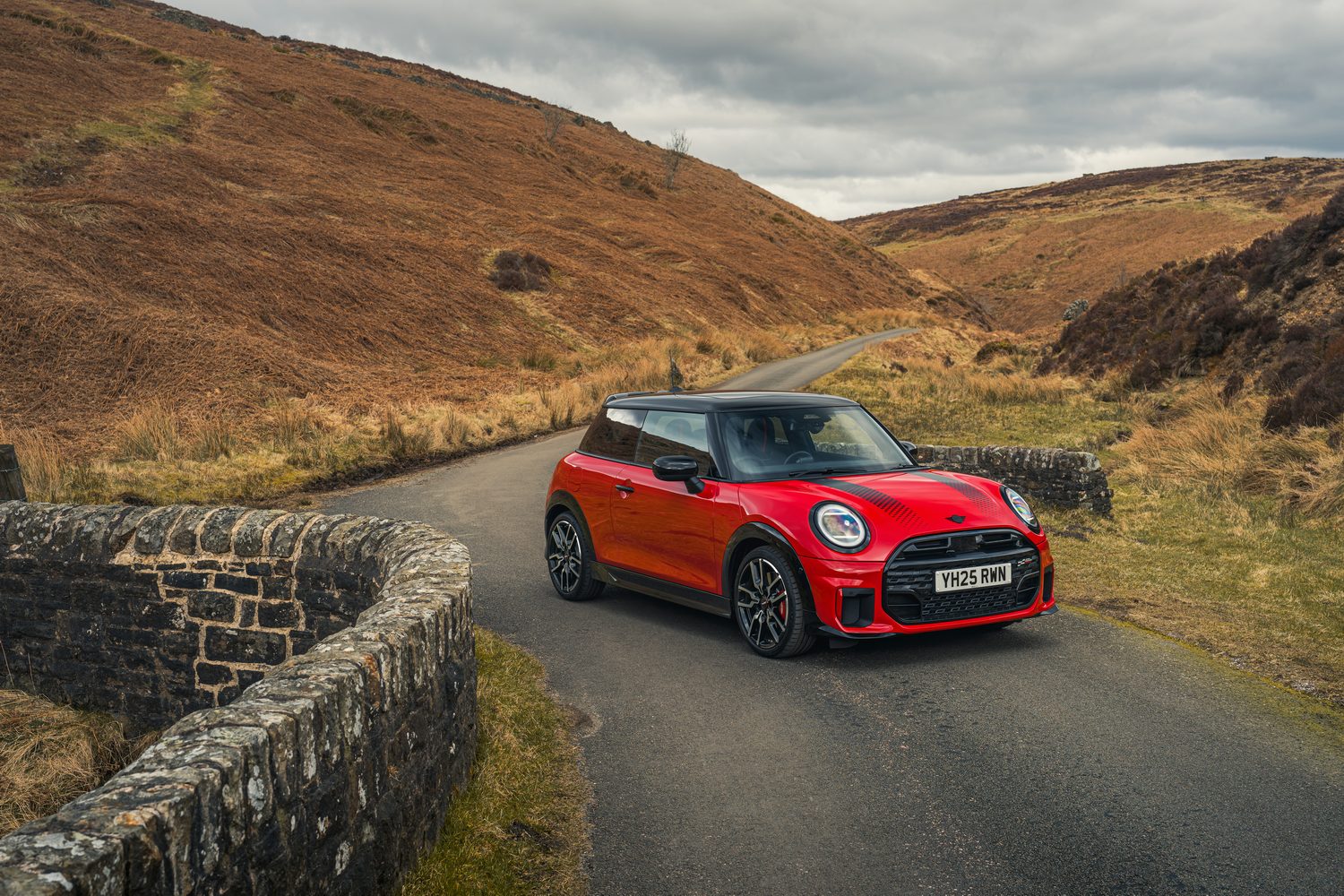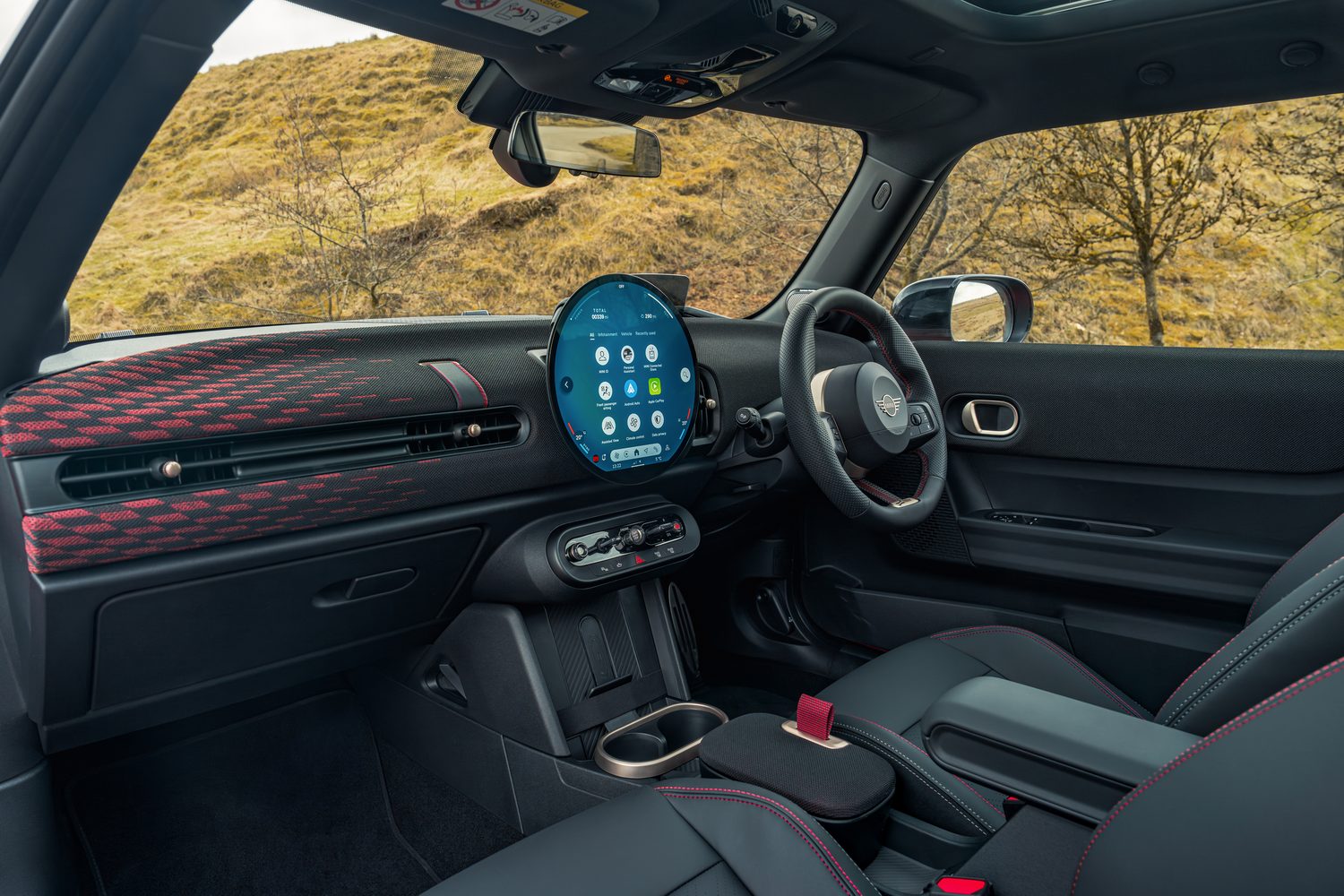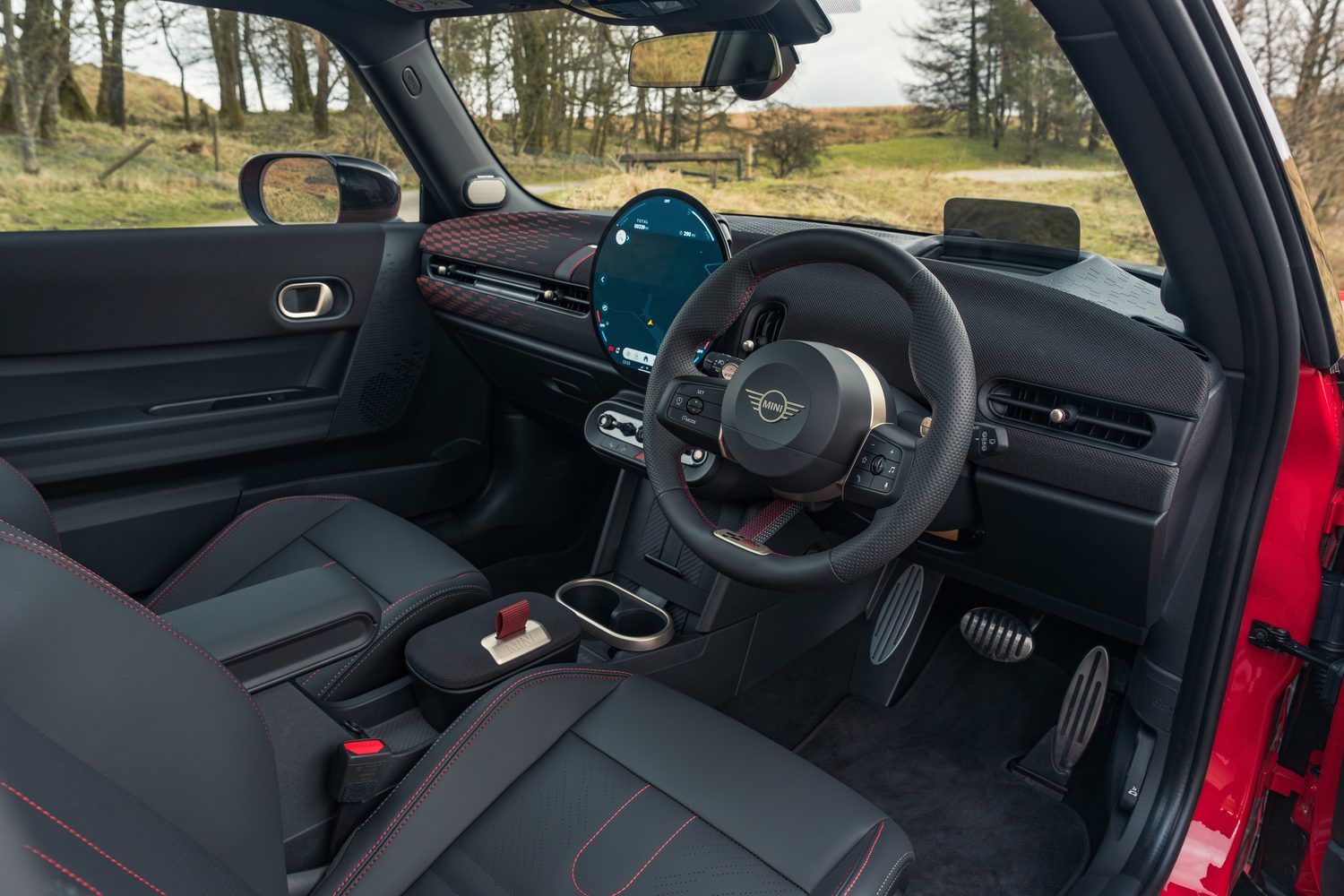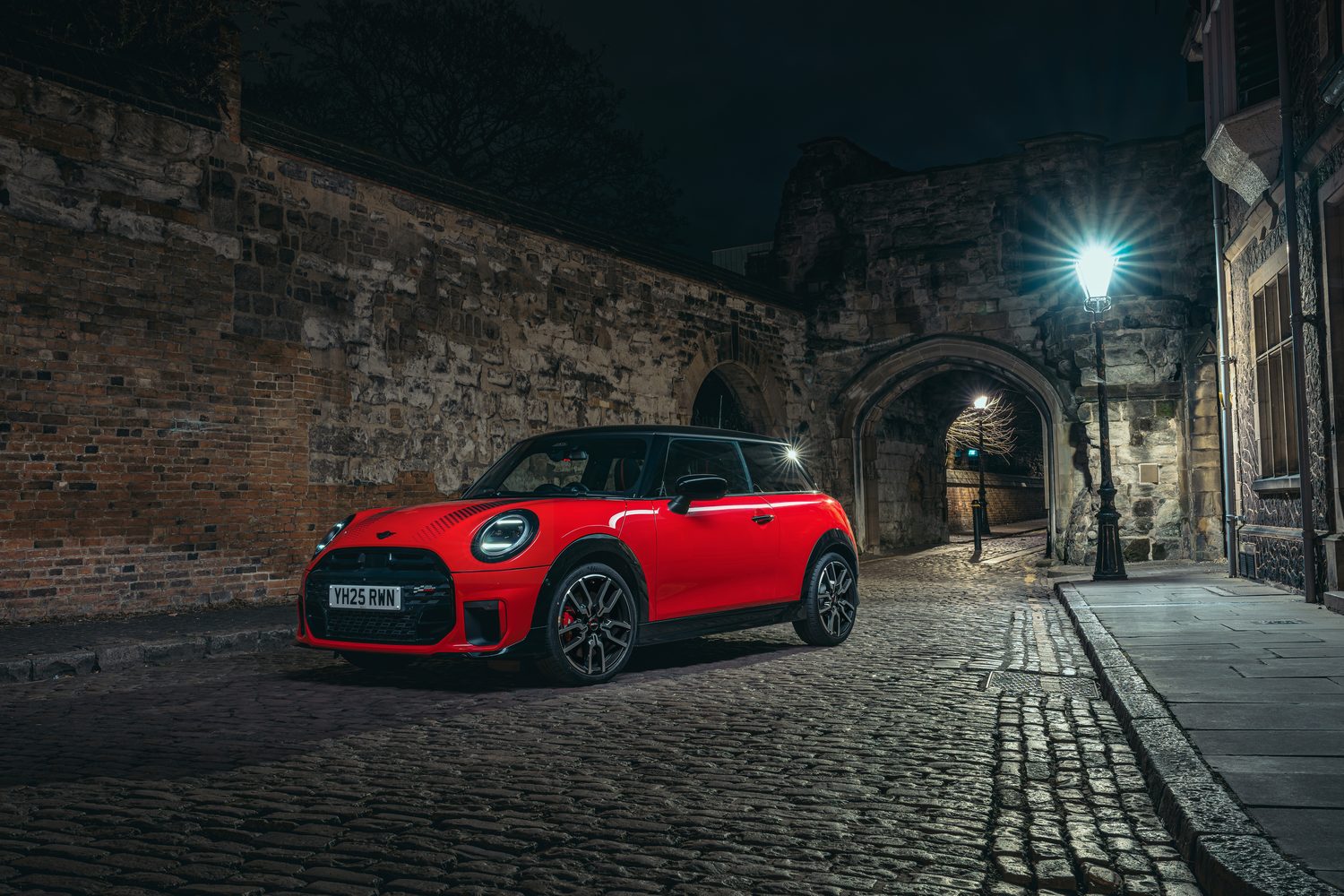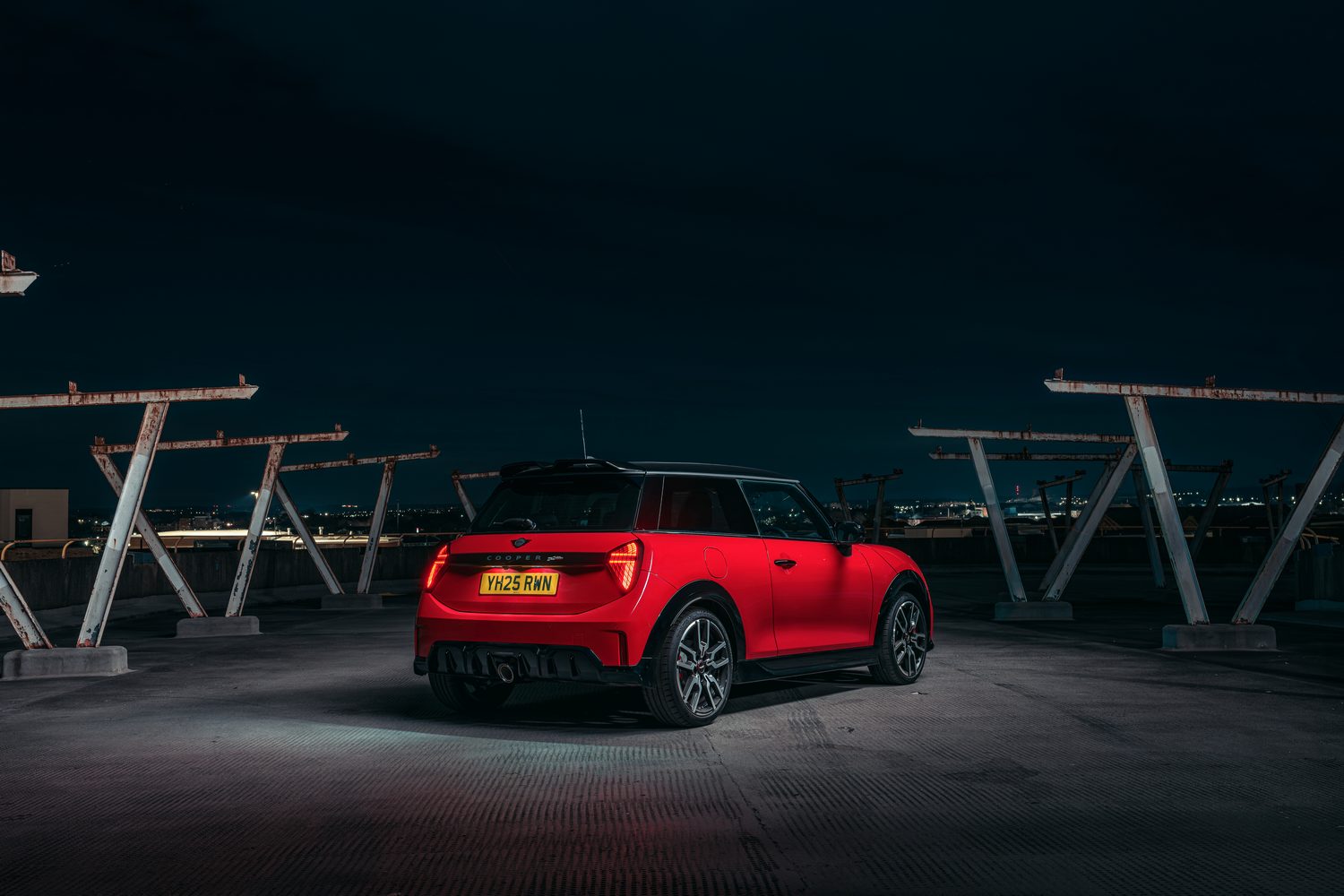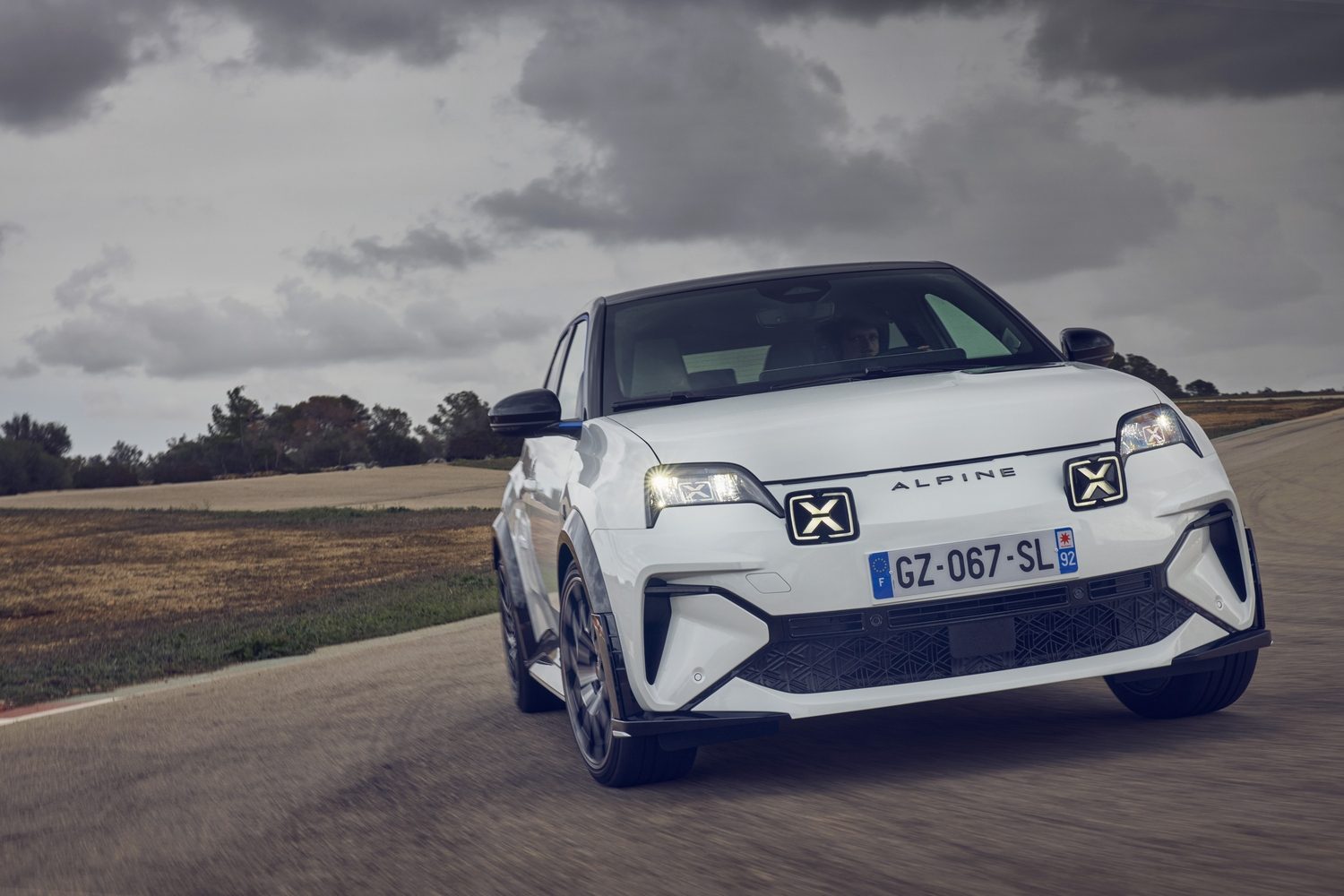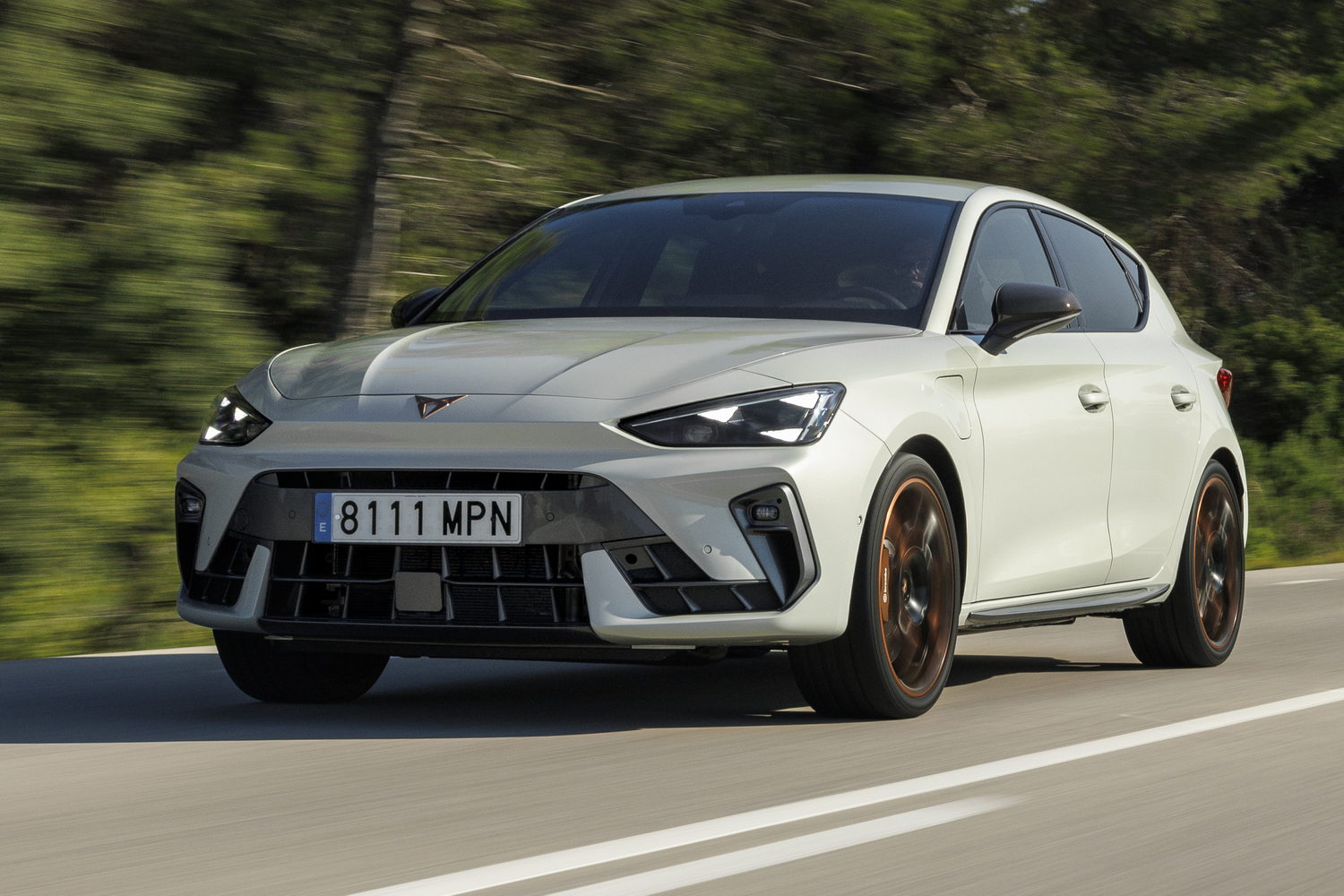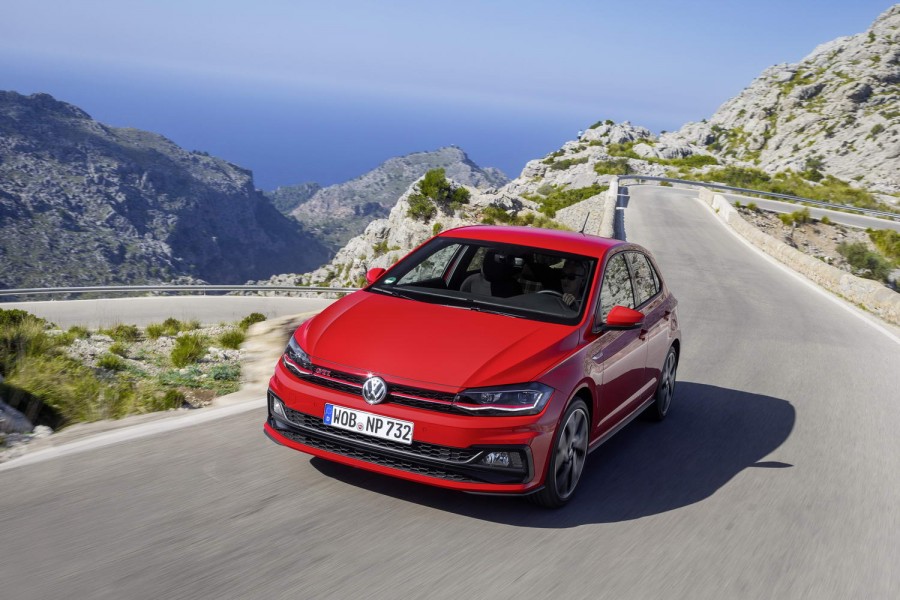Overview: MINI John Cooper Works in brief
MINI is in the process of expanding its John Cooper Works (JCW) portfolio, with five different models for buyers to choose from. Two of those are, at present, available in petrol format only, which are the JCW Convertible and the JCW Countryman, while another - the JCW Aceman - comes solely with electric propulsion.
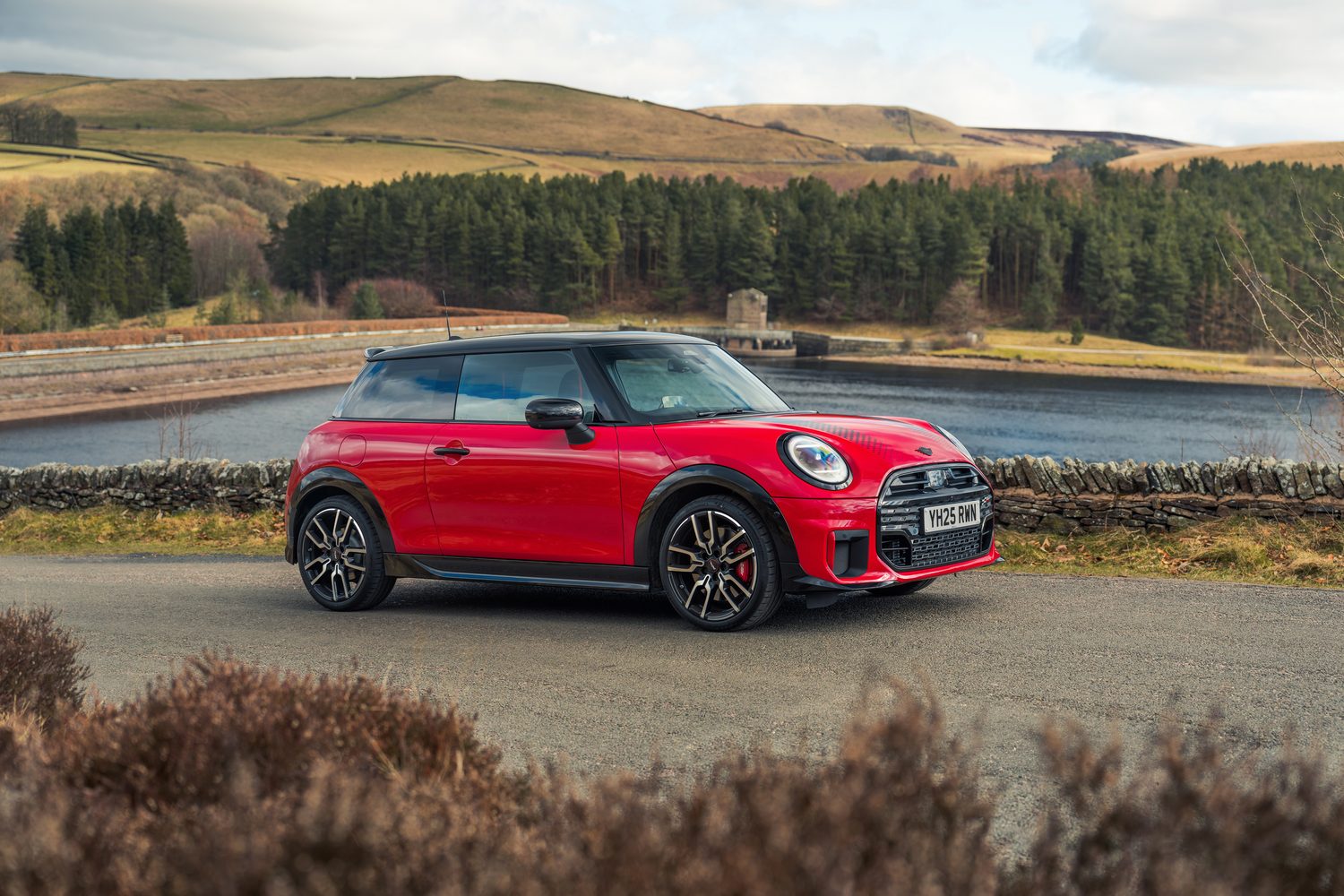
But if you want a three-door hot hatch wearing the hallowed three letters, you've got a choice: you can go for the JCW Electric, as reviewed elsewhere on this site in full, or you can stick with a turbocharged 2.0-litre engine and opt for this 'F66' JCW. So which one should you choose?
Pros & Cons of the MINI John Cooper Works
Pros: Lively handling, strong drivetrain, acceptable ride quality
Cons: Suspension remains firm, JCW Electric is quicker... and cheaper
What's different from the MINI John Cooper Works Electric?
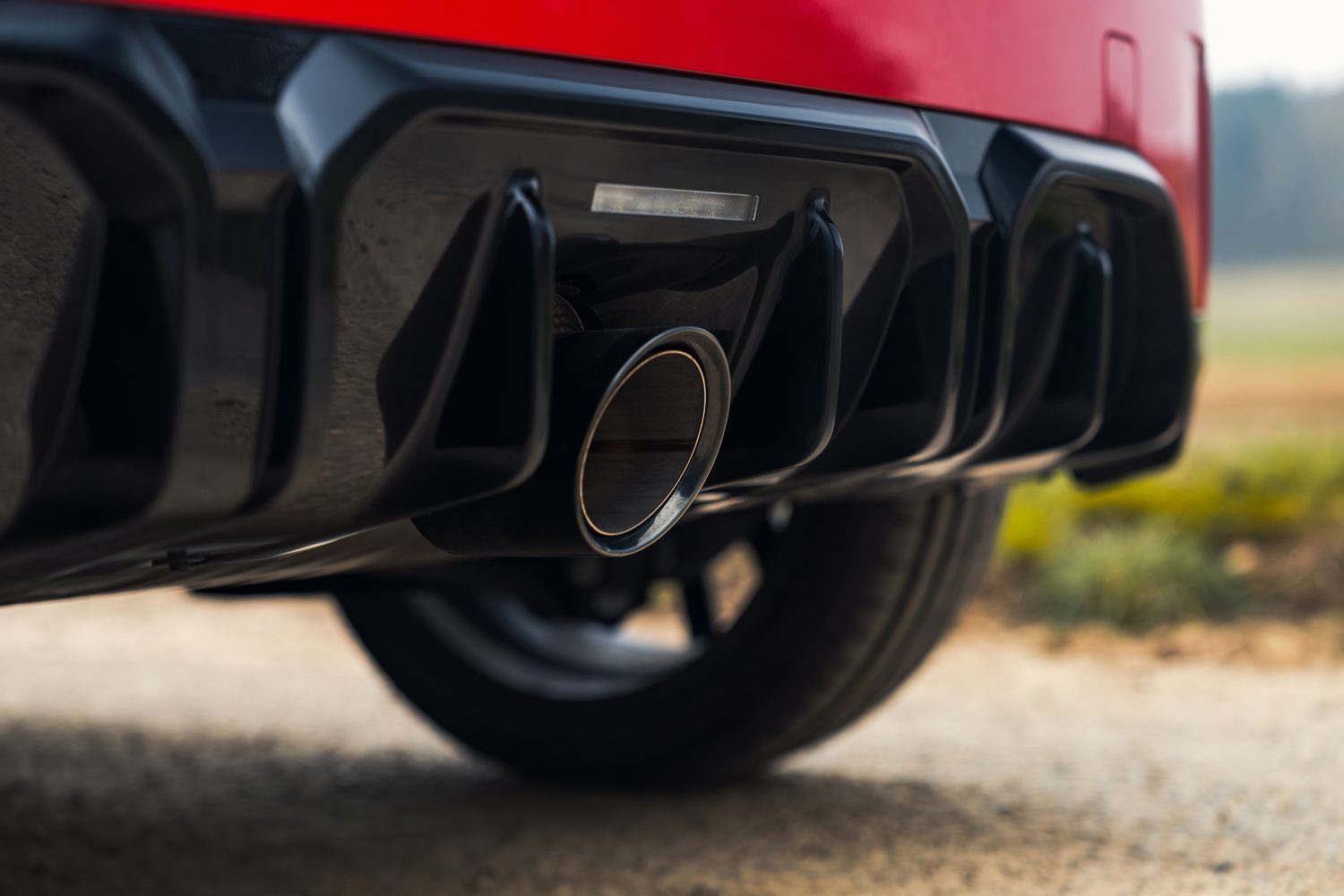
You'll need to thoroughly scrutinise both a JCW Electric and a petrol-fuelled JCW sitting alongside each other to be able to work out the visual differences, because although they're different bodies, the latter has its appearance informed by the styling of the former.
Perhaps the most obvious differentiators are at the back of the car. First of all, this JCW has a perfectly round central exhaust pipe, which of course the EV does not need. And then secondly, the electric model has a black flag-motif panel on the part of the tailgate with the number plate on it, whereas the petrol variant does without.
But there's more than that, such as a different roof spoiler arrangement on the petrol car to the electric one, as well as a more open grille at the front and the lack of the two, defined bonnet creases that you'll see on the JCW Electric.
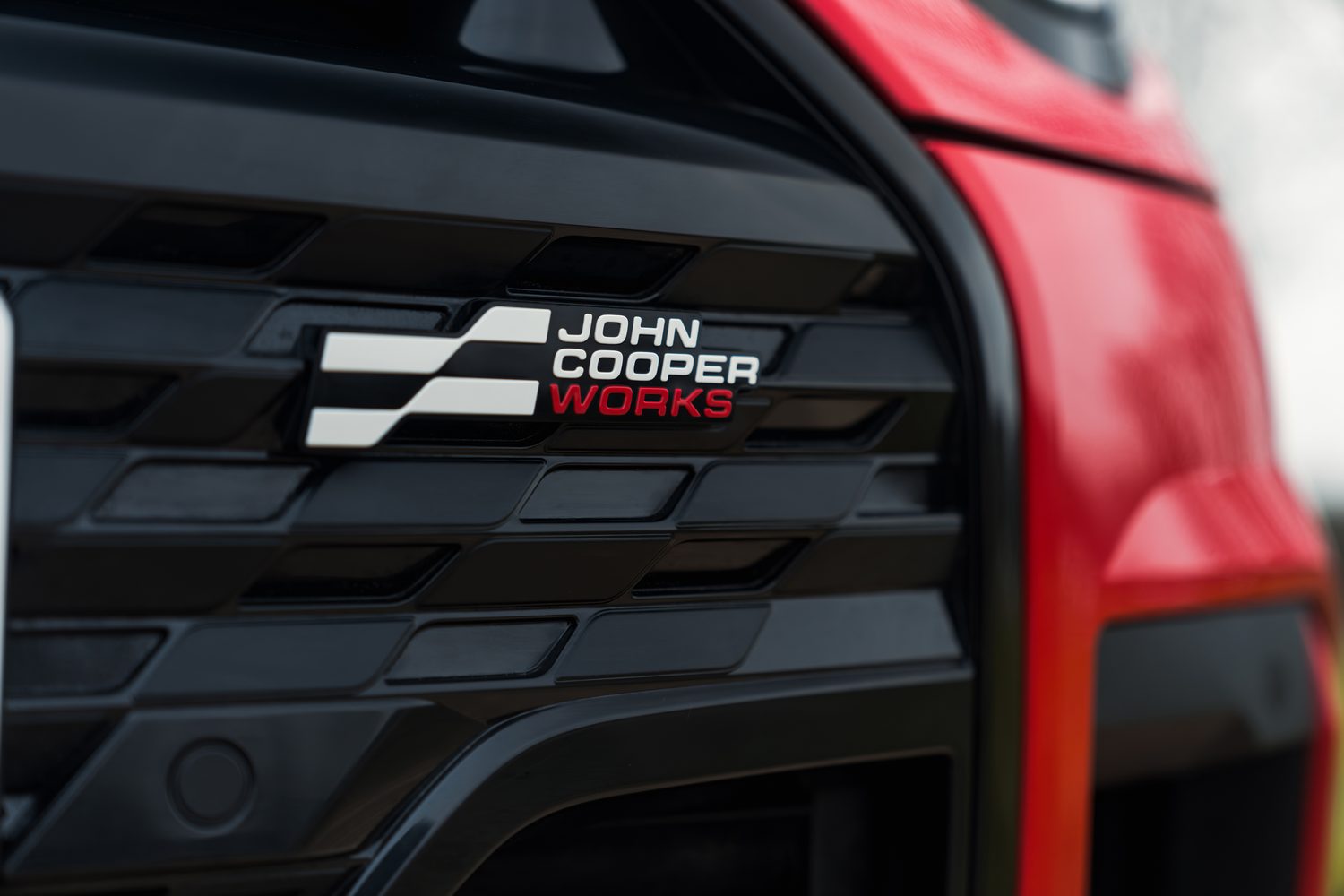
The exhaust at the rear and the cooling requirements for the MINI's turbocharged engine at the front mean the bumpers are also of different shapes, so the identifiers are there if you look carefully enough for them.
In isolation the JCW looks good. It's squat and purposeful, and accentuated with the red details of the John Cooper Works legacy, as well as wearing the chequered-flag badges that denote these high-performance MINIs, it immediately marks itself out as something more special than a basic Cooper C.
As for colours, the standard (i.e., the only no-cost) finish is Chili Red II, while eight others (one solid, seven metallic) all come in at €851 apiece. As with any self-respecting MINI, this JCW can have a contrast roof and various graphics applied to it, and the standard wheels are 17-inch items - that's one inch smaller than the rims fitted to the JCW Electric from the factory - while two options can enlarge the alloys on the petrol version to 18s.
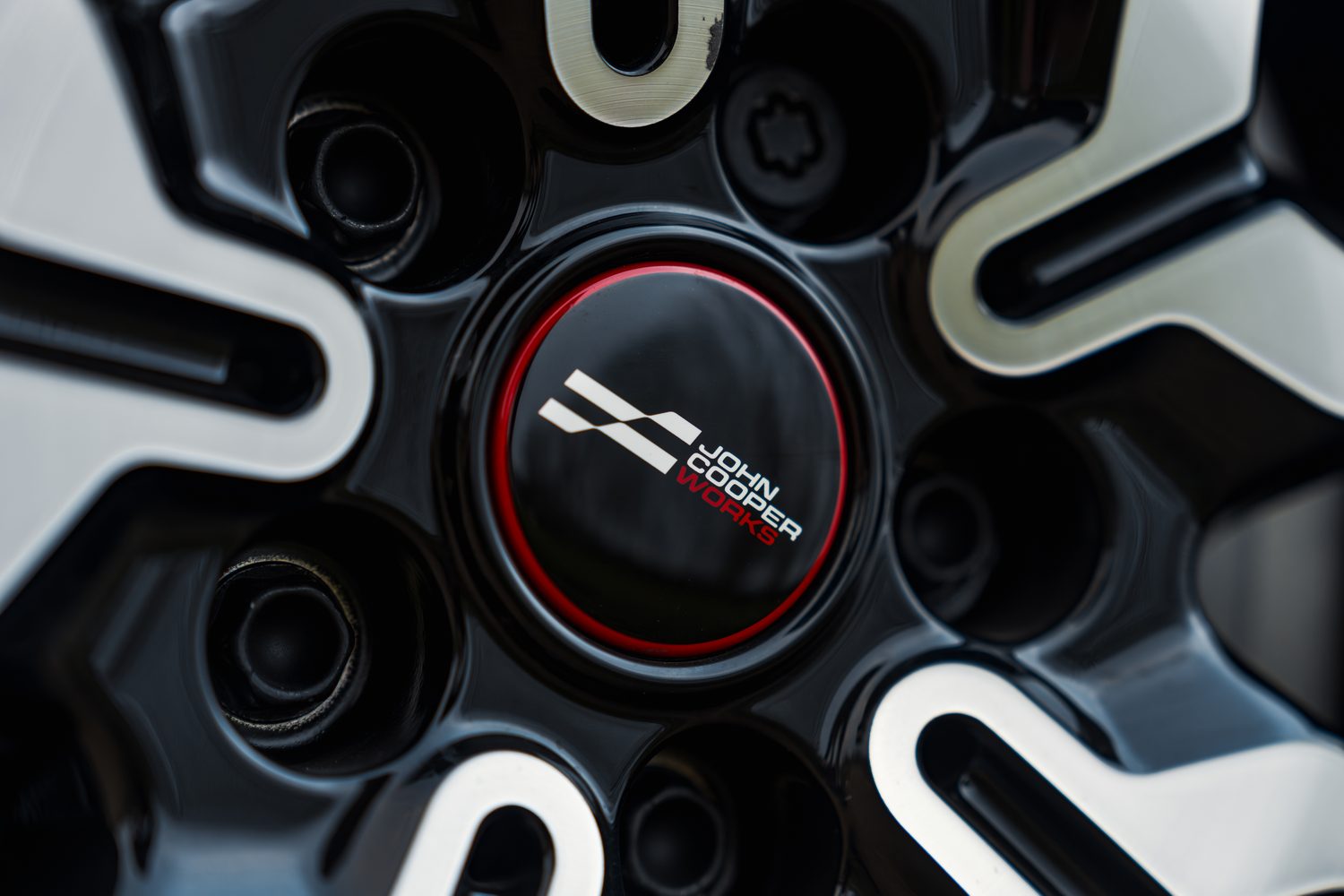
Performance of the MINI John Cooper Works
• Potent 2.0-litre engine brings added aural drama
• Handling better than EV due to lower weight
• The ride quality is miles superior
As this fourth-generation (speaking in the modern, BMW-owned era) combustion-powered MINI is essentially the old car but with some of the Electric's styling cues grafted onto it, underneath the bonnet it uses the familiar 2.0-litre turbocharged four-cylinder petrol engine that has been deployed for some while now.

This still makes 231hp, which has long been the peak power of most normal front-wheel-drive MINIs. The 300- or 306hp JCW cars you might be thinking of were all-wheel-drive variants of the Clubman and Countryman, but of course the exception to that rule is the madcap GP3, which gained the full 306hp iteration of this engine, but stuck with front-wheel drive.
One thing that has changed from petrol-powered Mk3 JCW to Mk4 is that the peak torque has been bumped up 60Nm to a maximum of 380Nm here, which is healthy, but now there is only a seven-speed DCT automatic, with no manual gearbox option. There's also no limited-slip differential on this 2.0-litre car, and it comes with suspension with its own specific sporty tune to match the car's outlook.
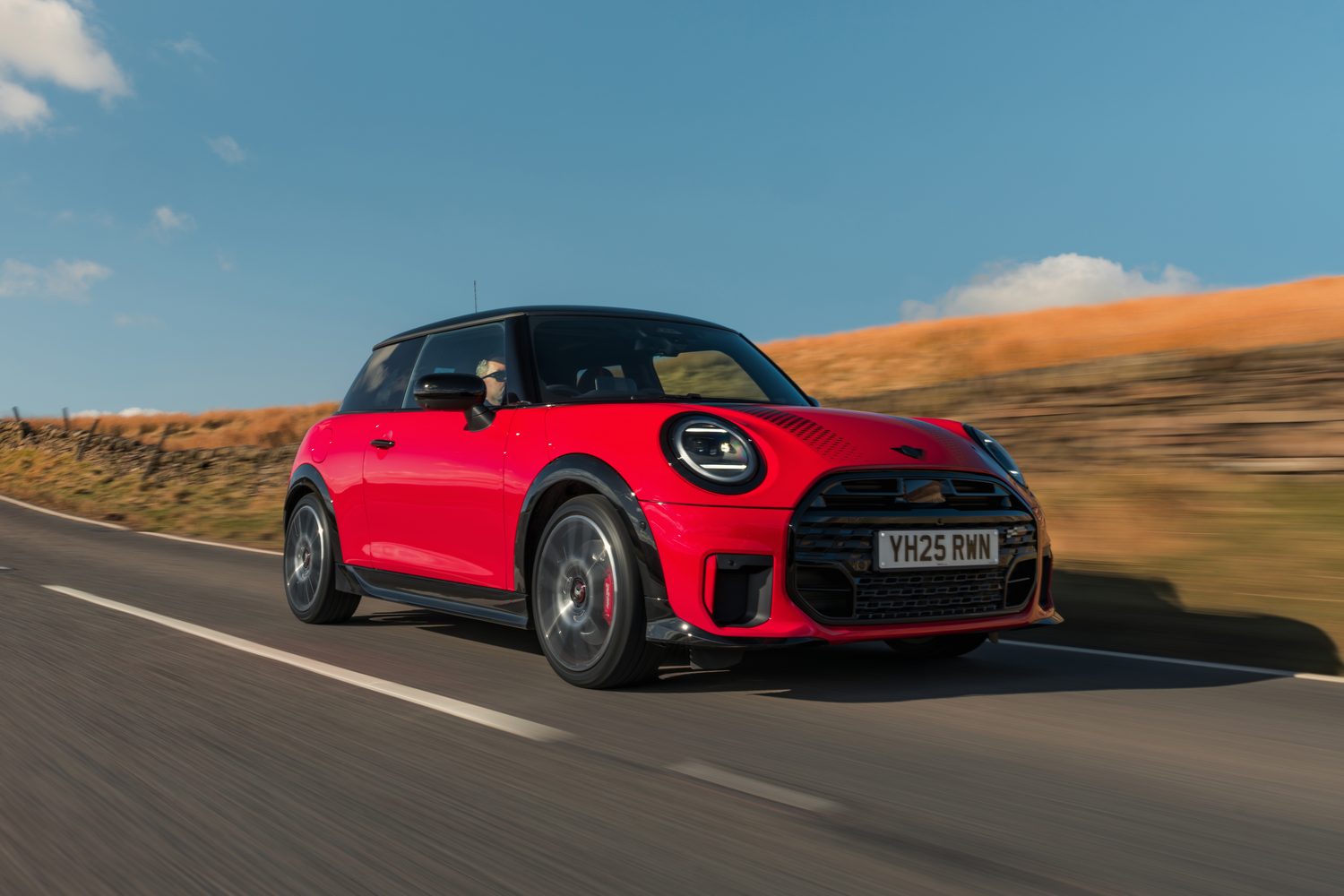
It's fair to say that, having driven the JCW petrol immediately in the aftermath of the bone-shaking JCW Electric, we know which car we far prefer - and it's the one with the 2.0-litre turbocharged engine. While we are in no way saying it's the most comfortable or softly sprung car in the world, the way the combustion-propelled MINI rides is far preferable to the incessant and infuriating jiggling the JCW Electric puts you through.
Concomitantly, it's also better in the corners, because it feels nicely planted and less like it is going to pogo itself off the road if it meets a mid-bend bump. It's also 325kg lighter than the EV, so it's considerably more agile and playful.
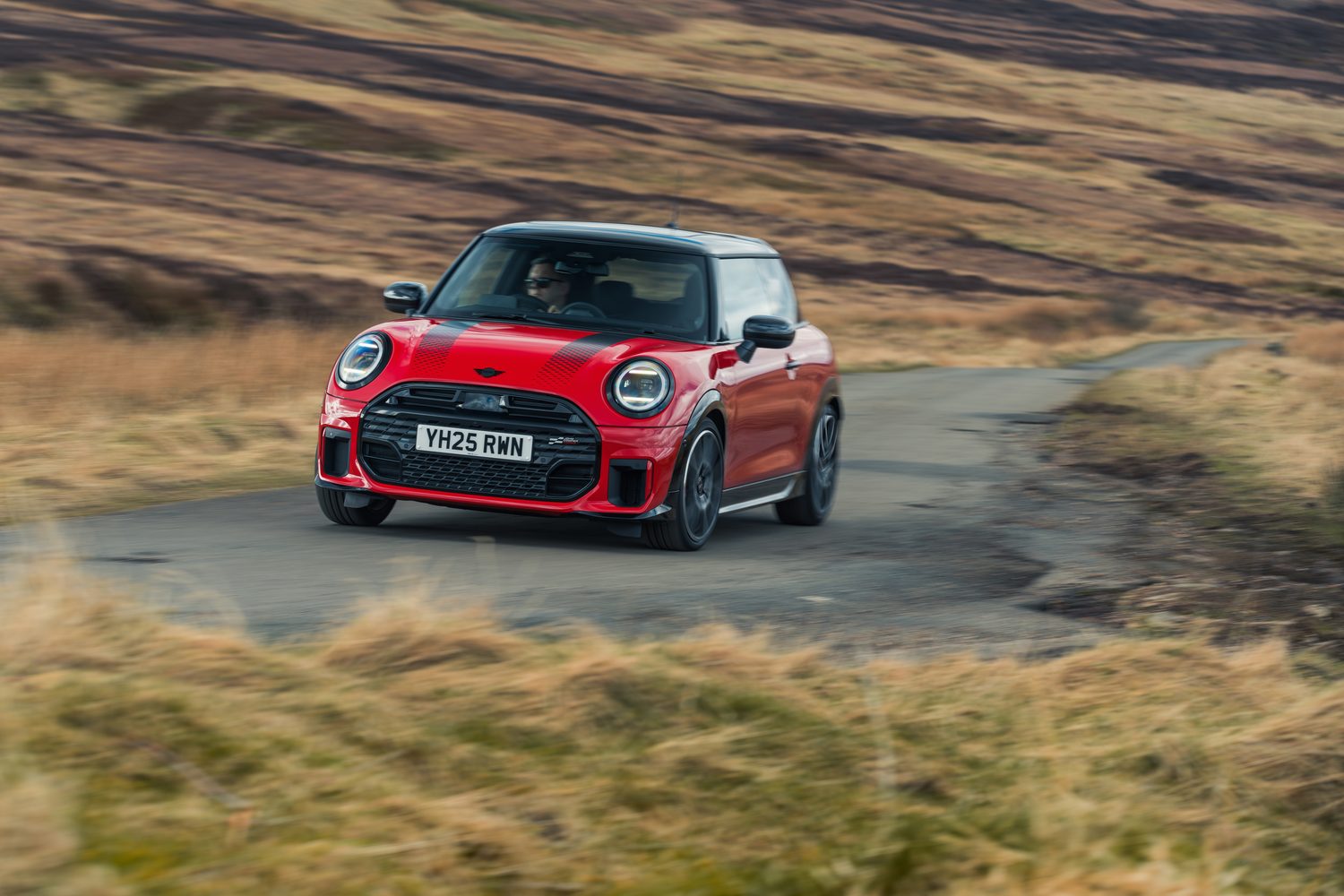
The JCW petrol is not perfect, of course, as its suspension can still be a little brittle on rougher surfaces, and the four-cylinder engine isn't the most tuneful powerplant we've ever encountered, even if that centre-exit exhaust does its best to enliven proceedings with various rumbles and thuds during up- and downshifts.
But the JCW is far more pleasant and for more tolerable for more of the time than its electric counterpart, even if we wish it had slightly more natural-feeling steering than the overly weighty set-up it's blessed with.
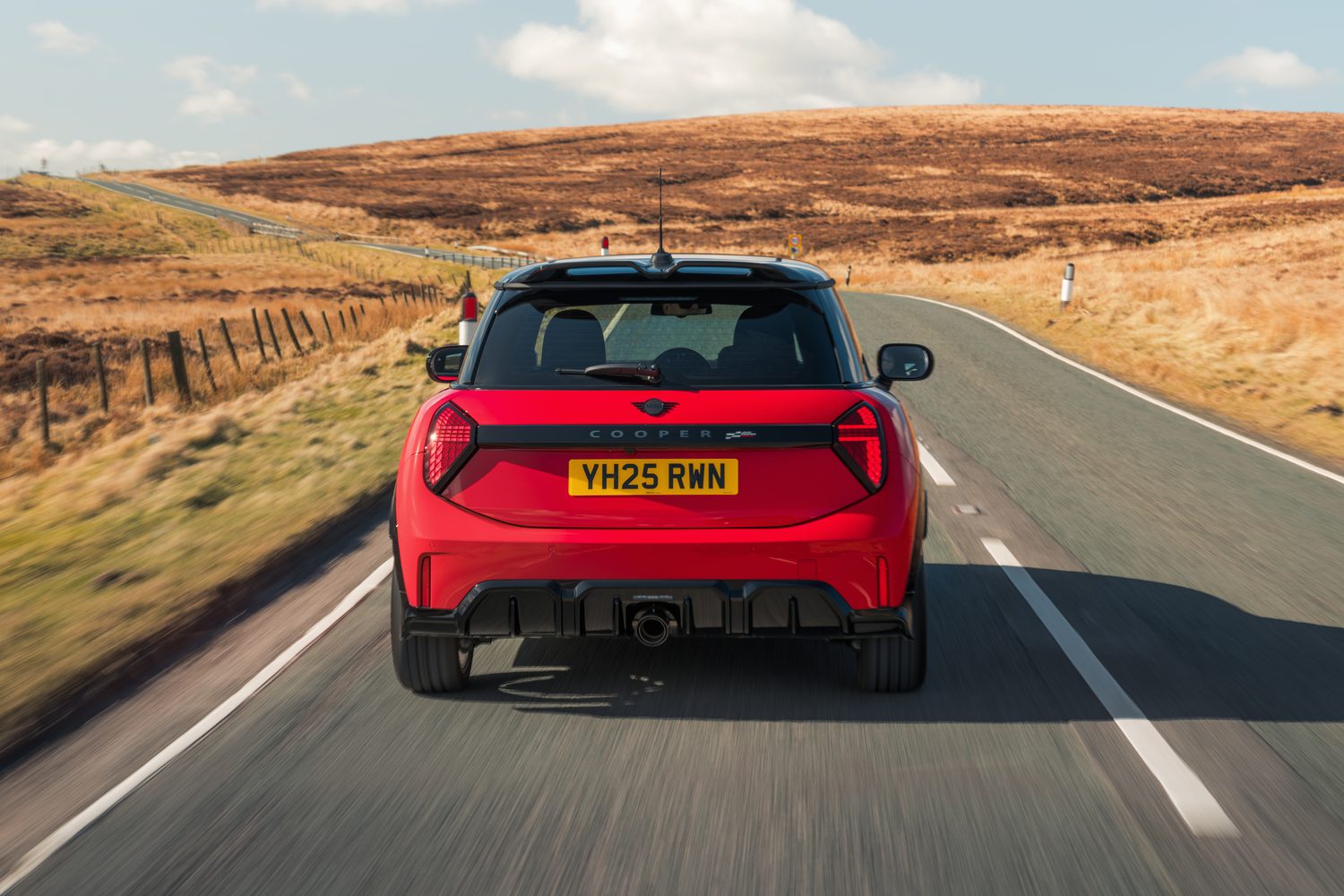
In short, you can just have fun in the petrol JCW, rather than finding yourself fuming at a stupidly firm suspension set-up as is the case in the JCW Electric.
Interior, Practicality, Tech & Comfort of the MINI John Cooper Works
• Red-and-black theme for JCW's cabin
• High-quality fixtures and fittings
• Usual MINI three-door packaging constraints
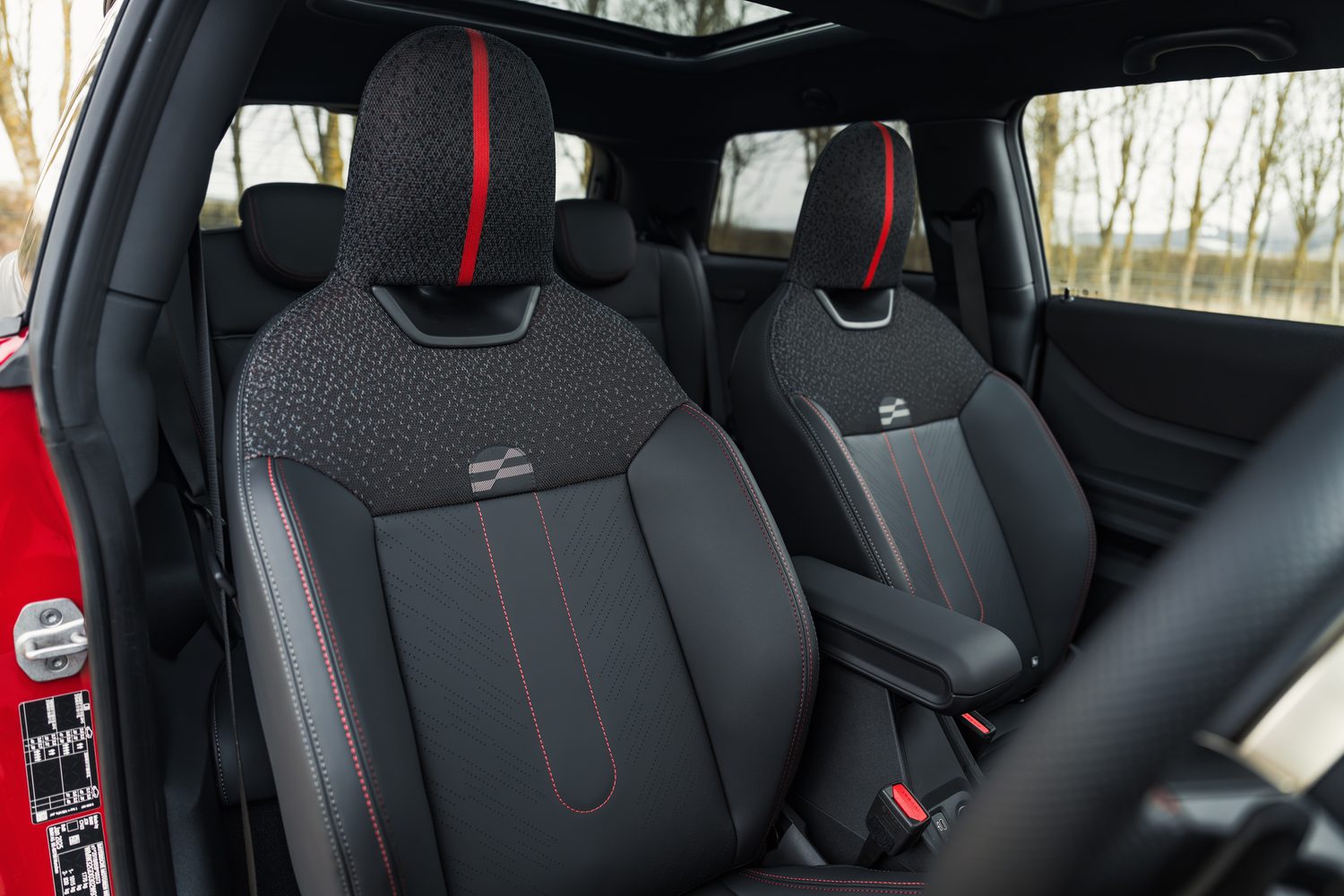
As with the Electric, the MINI JCW's cabin is a classy, stylish and well-built interior, spruced up with some red detailing and sports seats. These latter items aren't the most supportive or deeply sculpted in the world, but they do a decent job and, thankfully, they're mounted low enough in the car that you feel like you're ensconced down in the vehicle, rather than perched upon it.
Red stitching and red highlights on the wheel, including for that little fabric strip at the bottom that forms a substitute for a third, fixed spoke, and a red chequered flag pattern on the passenger side of the knitted dashboard further lift the ambience, as do a smattering of JCW emblems here and there.
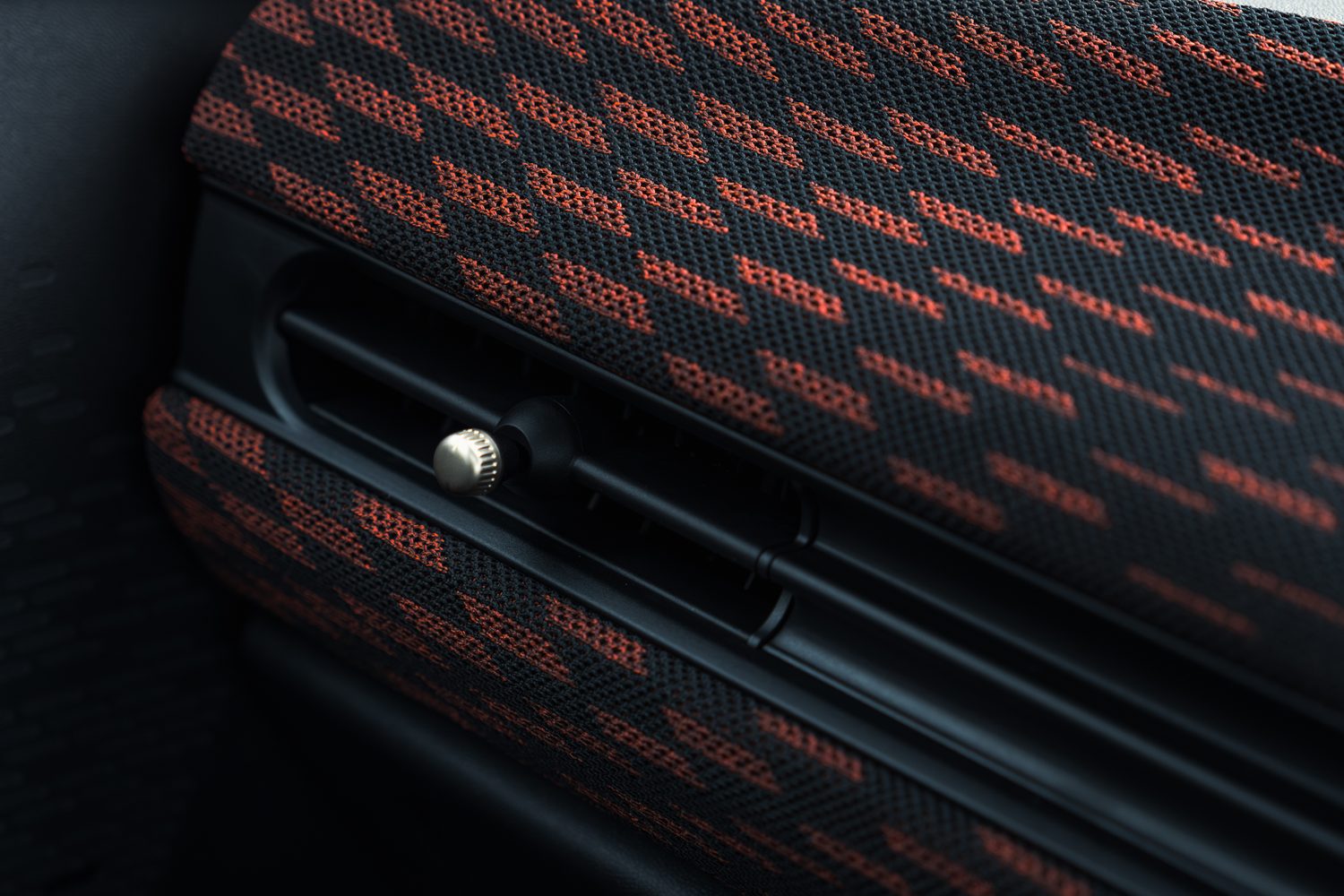
In terms of the tech, it's the familiar 9.4-inch circular touchscreen in the MINI JCW, which works well enough once you've got a certain degree of familiarisation with precisely how it operates and is laid out, but there will be those who lament the relative dearth of physical switchgear in the hatchback's cabin.
Aside from that dominant main display, there's also a fold-up head-up screen for the driver atop the dashboard.
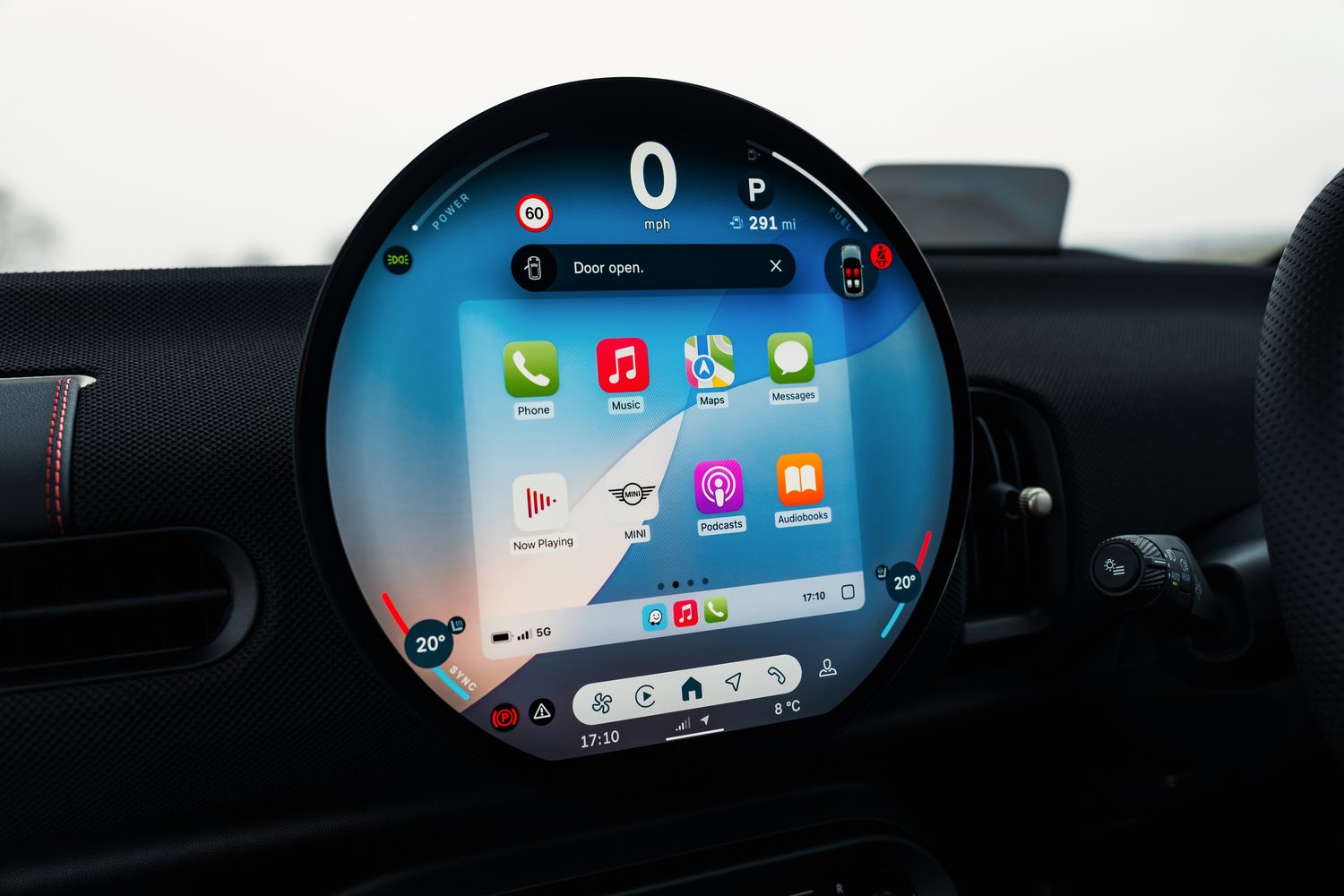
But when it comes to practicality, it's a familiar MINI lament. While the company has done its best to include some storage cubbies up front, plus a couple of cupholders and also some scalloping of the door pockets, realistically there are more useful small cars than the JCW because they don't prioritise interior design over practicality.
And then, as with any three-door predecessor, the rear seats are only suitable for smaller children, while the boot in the MINI is a piffling 210 litres. Therefore, if you want a JCW that can accommodate some family clobber (and, more importantly, family members in the back in any small degree of comfort) and you don't want the electric Aceman, your only realistic option is the large JCW Countryman.
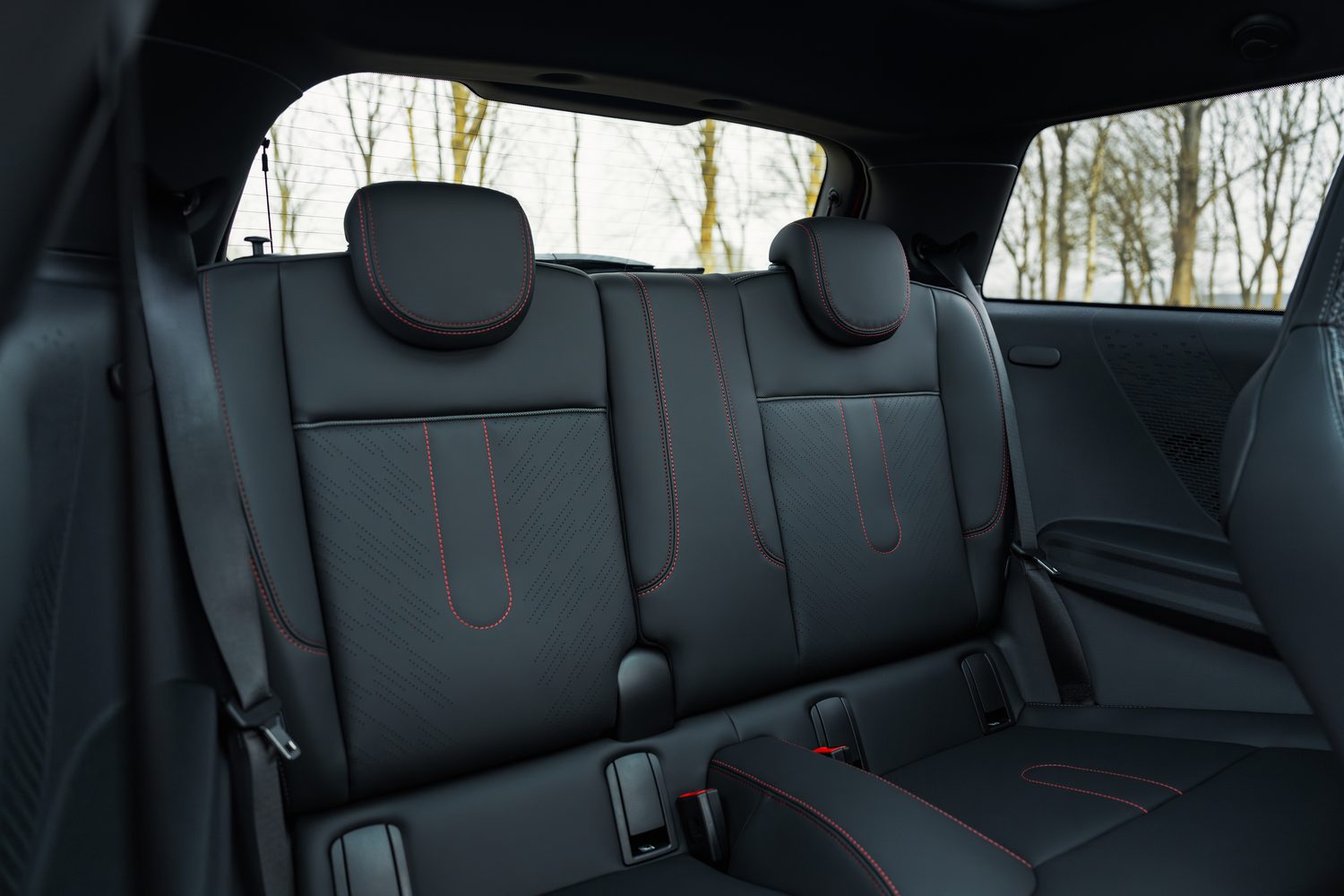
Irish Pricing & Rivals of the MINI John Cooper Works
• Option of electric or petrol is solely for three-door JCW
• Petrol version carries a hefty €12,000 premium
• Very few new petrol hot hatchbacks left
While there's not such a huge price disparity between the basic, petrol-fuelled MINI Cooper C and its Cooper E alternative, the high-performance nature of the JCW means that although its 2.0-litre engine is relatively clean at 154g/km of CO2 - for something with 231hp - it still incurs a higher rate of VRT, which in turn places the starting price of this petrol car just 70 euro shy of €51,000.
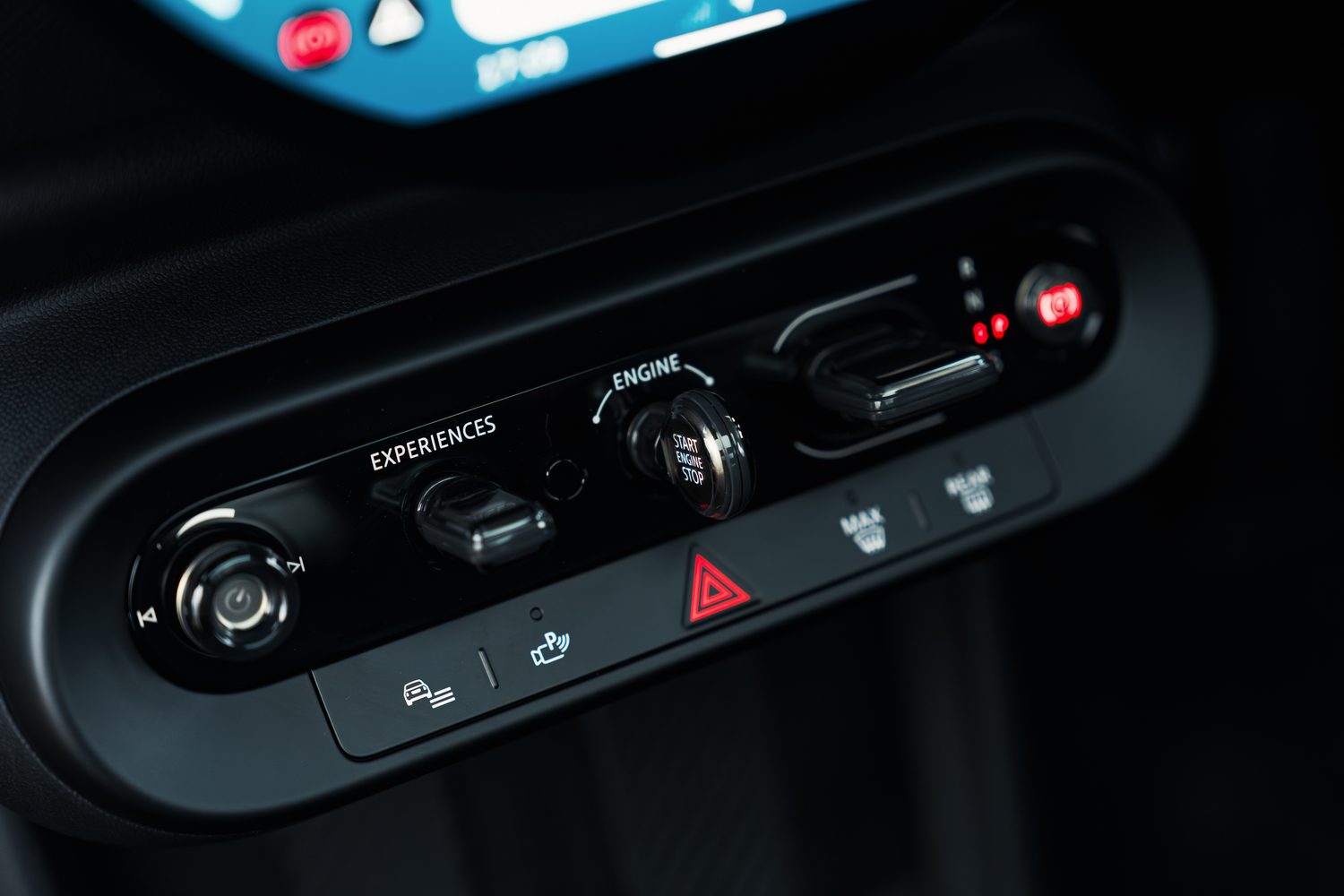
And that's more than €12,000 in excess of the JCW Electric... so you might well feel you can live with the latter's atrocious ride when you can save so much money by opting for it.
Perhaps the saving grace for the JCW is that there are precious few petrol-powered, B-segment (that's supermini-sized) hot hatchbacks still going, because the Renaultsport Clio has long since departed this mortal coil, while even the Ford Fiesta ST has gone the way of the warrior as well.
The brilliant Hyundai i20 N shone oh so brightly, but briefly, and it doesn't appear to be coming back either. So, your only realistic, direct-comparison rival nowadays is the... *checks notes*... Volkswagen Polo GTI. And guess what? That hot VW is not for sale in Ireland any longer, although it is still on the Volkswagen UK configurator if you desperately wanted to import one.
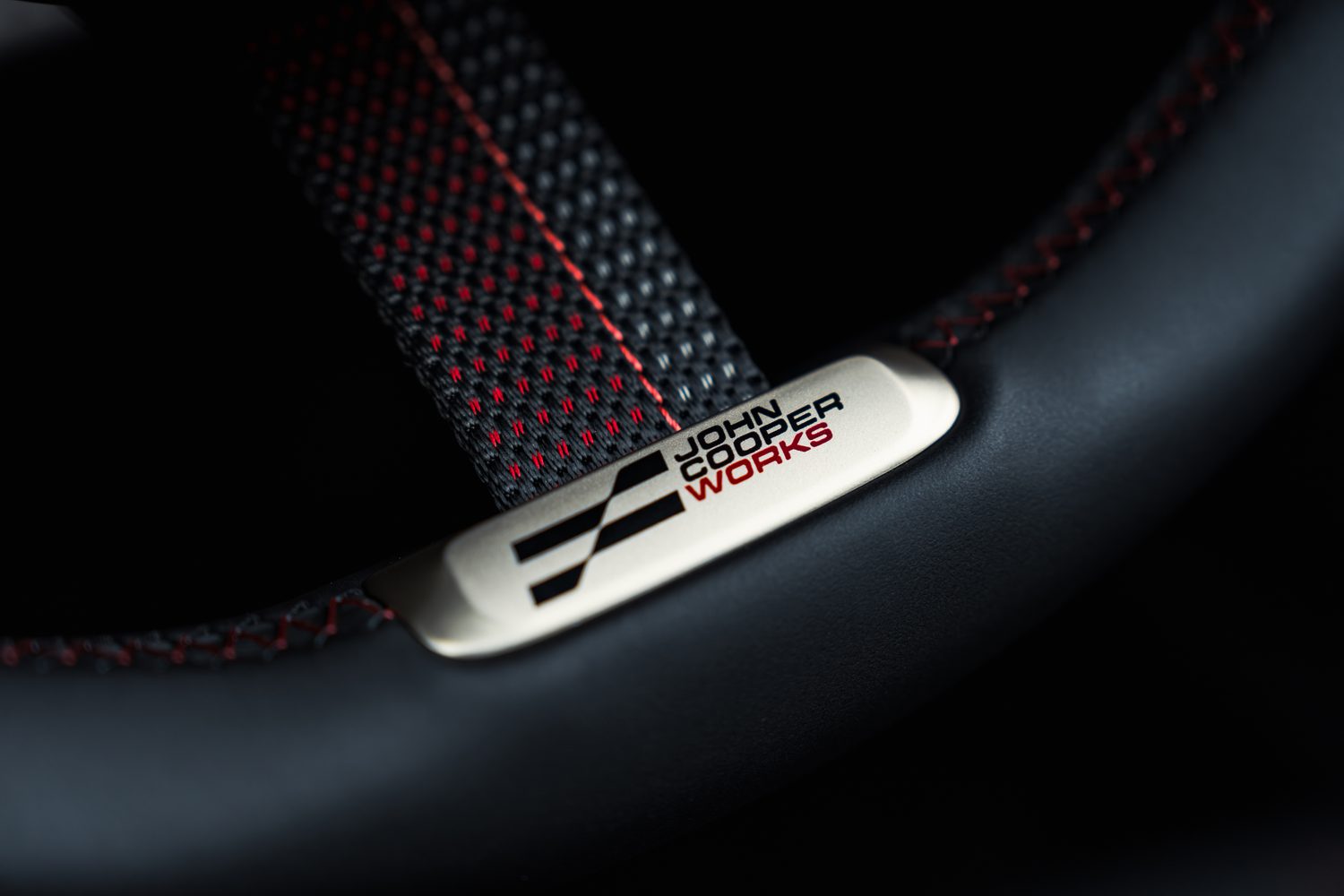
So, basically, you have to balance whether the MINI JCW's astonishing rarity these days - it's the only petrol-powered, three-door hot hatch still in existence as a new car, with the exception of the Toyota GR Yaris special-order oddball - and the fact it drives in a far superior, more manageable fashion than the JCW Electric is worth a substantial 12-grand premium...
Verdict - Should You Buy the MINI John Cooper Works?
It's definitely a strong little performance car, irrespective of the fact it is now operating in a class of one. But we like the new MINI JCW because it has reintroduced some of the rawness that more recent John Cooper Works products seem to have engineered out, all without the engineers fitting it with the grating, overly firm suspension that so afflicts the JCW Electric and JCW Aceman cars.
This three-door JCW is certainly not cheap, nor is it flawless, but it's characterful and enjoyable enough to merit its continued existence. And it's clearly our favourite model of all five JCWs on sale right now.
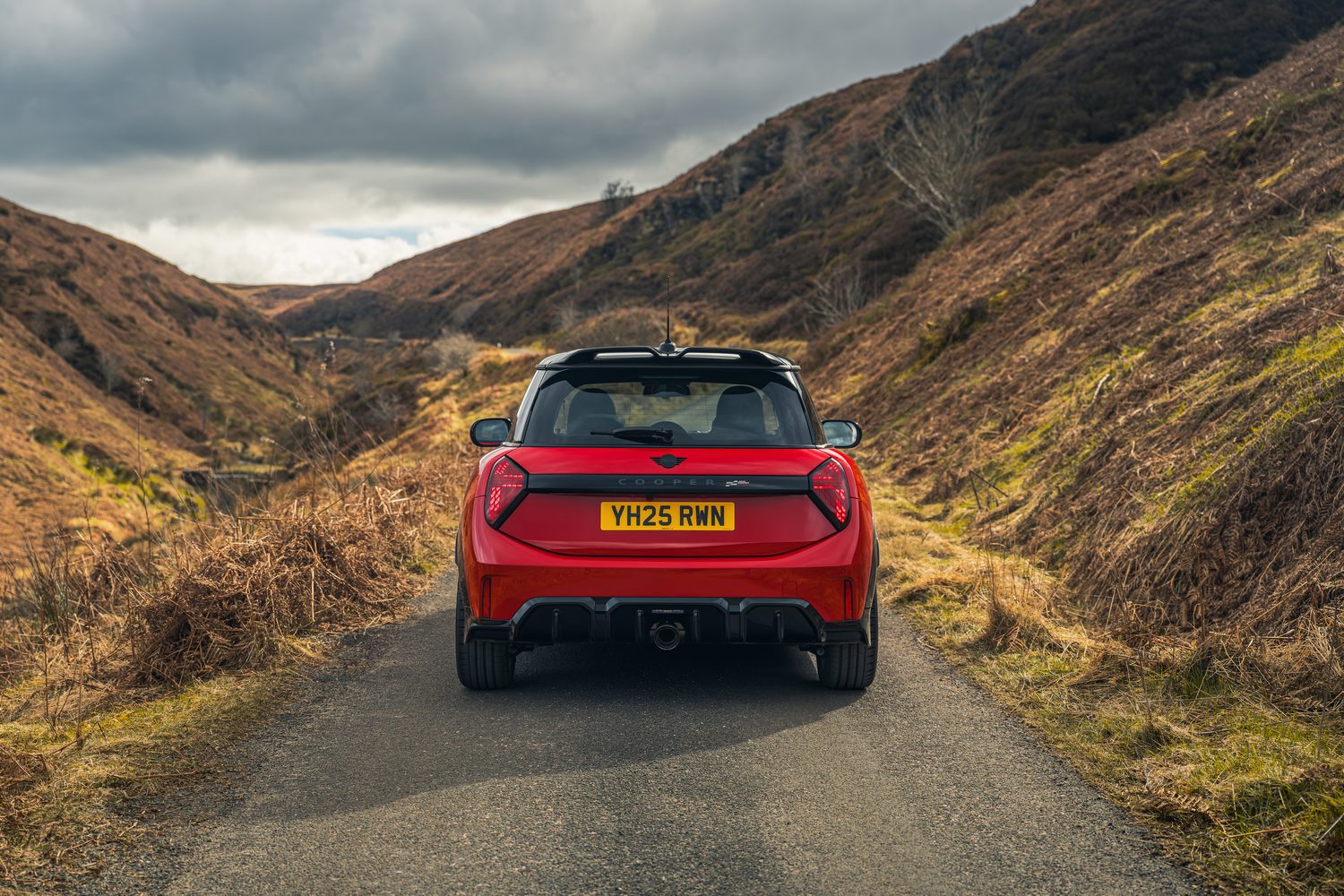
FAQs About the MINI John Cooper Works
Why is there not the word 'Hatch' in the MINI John Cooper Works' name?
It's to do with MINI deciding that because everyone called the hatchback three-door model the Cooper anyway, then Cooper is now its official name - rather than being a specific trim level instead.
Normally, all MINIs put their model type immediately after the manufacturer; so MINI Cooper, MINI Convertible, MINI Aceman and so on, usually followed by a letter or letters (C, E, S, SE) to denote whether they're base-spec, or petrol, or electric, and so on.
However, the John Cooper Works cars do things a little differently: officially, for example, it's the MINI John Cooper Works Countryman, rather than the MINI Countryman John Cooper Works.
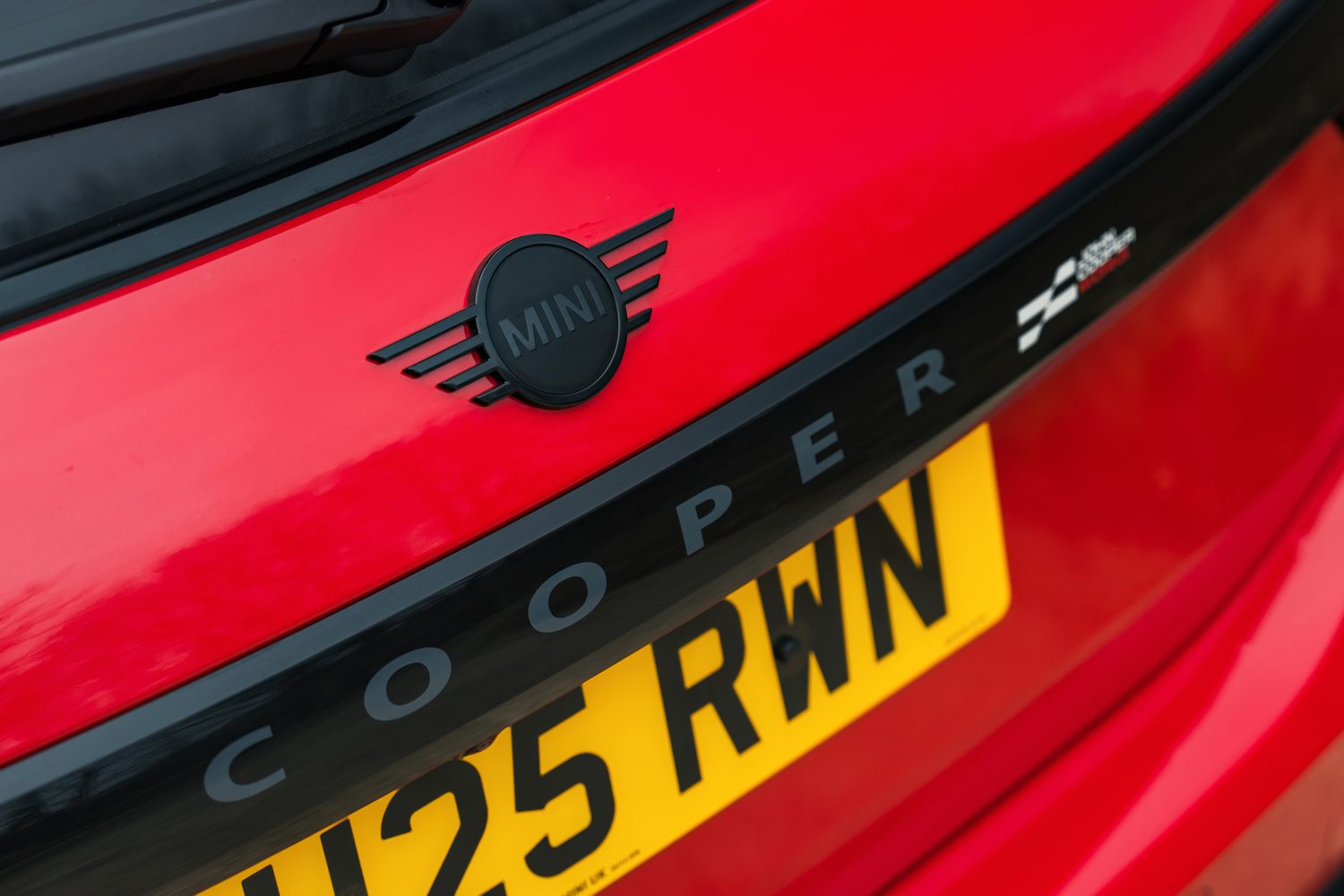
But as both the electric hatch and the petrol hatch would be known as Cooper E/SE and Cooper C/S respectively, it'd be a bit repetitious to say 'MINI Cooper SE John Cooper Works'. Therefore, the EV is the JCW Electric, and this car is just the plain JCW. Phew!
Will there be a five-door MINI John Cooper Works?
No, because the 5-Door (giving it its proper name) still continues, but it has been effectively replaced by the all-electric Aceman, so it's the newer zero-emission crossover which gains the JCW moniker. Similarly, the Clubman has been killed off by the Aceman and Countryman in tandem, so the range of JCWs you see now is probably fully fleshed out. There could, of course, be an ultra-extreme MINI GP some way further down the line, as a final last hurrah for petrol power...
Want to know more about the MINI John Cooper Works?
Is there anything else you'd like to know about the MINI John Cooper Works? Or anything you feel we haven't covered here? Then just head over to our Ask Us Anything section and, well, ask us anything. We'll do our best to answer your questions.

